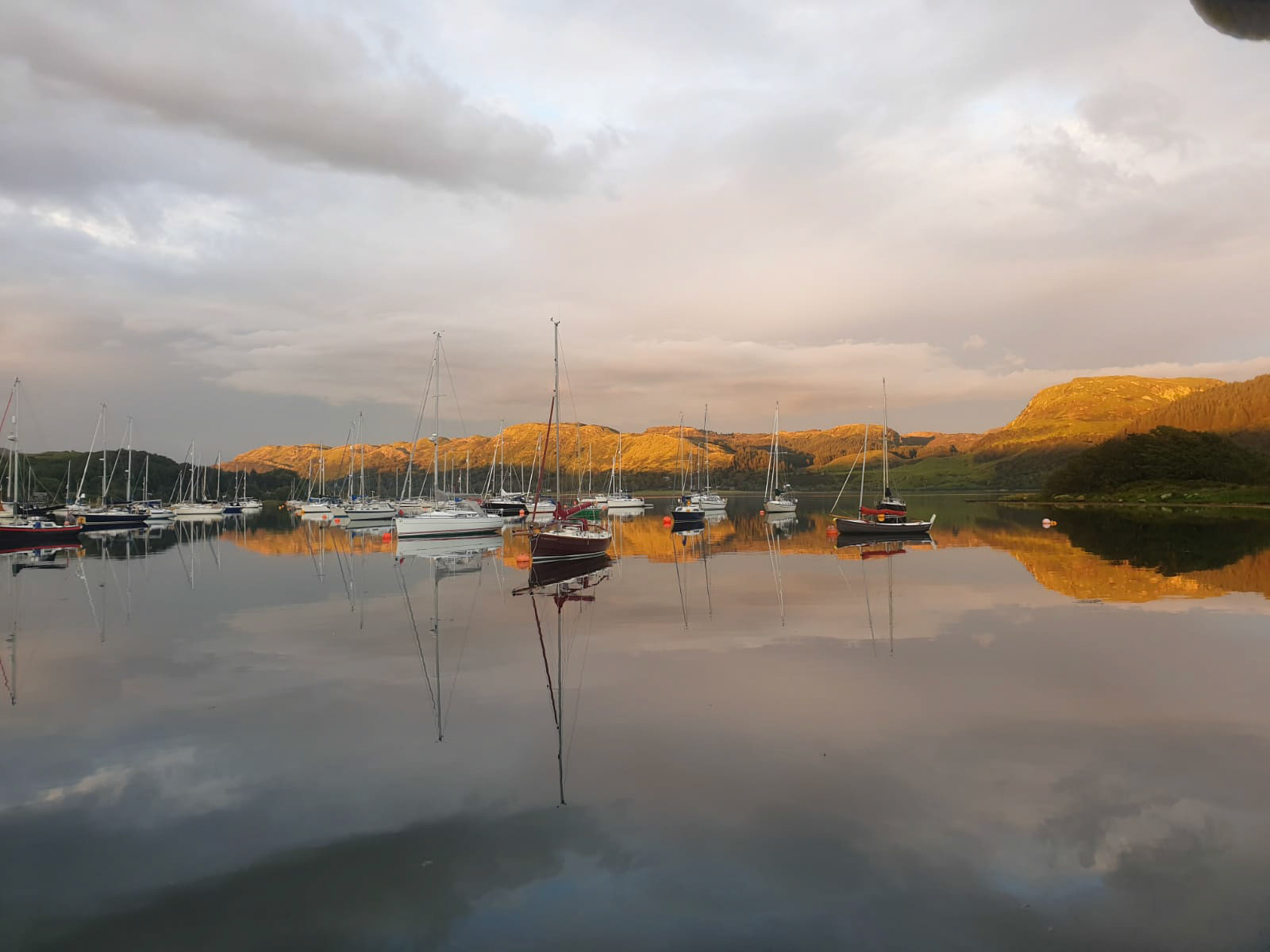7-28 August 2022
Rona’s main harbour, Acarseid Mhor on the South West coast of the island is a true delight. A little tricky to approach with strong winds but once inside the shelter of Eilean Garbh a lovely peaceful anchorage opens up with wooded hillsides to the west and open steep sided hills to the east. There are 4 mooring buoys available managed by Bill the resident warden and there is plenty of room to anchor either inside the main harbour or just on the outside. We knew some strong winds were coming in from the South West so we chose the buoy behind the little island in the middle of the harbour for some shelter. It worked well and we had a few reasonably peaceful nights! Rona, as with so many of the islands, has an interesting history. It was owned by the McLeods who conducted a lucrative piracy enterprise running out of Port nan Robhaireann (the robbers port!) until 1745 when they backed the wrong side in the Jacobean war. By 1843 the Clan was in so much debt that they had to sell Rona and Raasay when it was bought by a philanthropist who did his best to allay the worst of the ravages of the potato famine. It passed through several hands and various livestock enterprises before being purchased by a Danish lady in 1992. She removed the range of livestock especially the sheep, renovated Rona Lodge overlooking the harbour and converted the mission house at Acairseid Thioram (drying harbour) into 2 holiday cottages. She also introduced a small herd of Highland cattle, planted native woodland and installed a water supply. In 2002 six red deer hinds were brought to the island and somehow a stag on the island of Raasay got to know of their presence. He consequently swam across the Caol Rona serviced them and there is now a herd of about 75 red deer on the island!
Rona is still a peaceful wild and beautiful place and we spent our days walking the island to the north and the South, spotting deer and watching seals and a golden eagle. There is an interesting little museum detailing the lives of recent inhabitants, many old and decrepit crofts and a wonderful cave on the east side of Rona called Church Cave. A bit of a scramble to get there as you can see from the pictures but an inspiring spiritual place that saw many christening and services and even a wedding there in 2010. Later that evening as the rain and wind settled in for the night we were given a fly past by a local (we think a youngster from Raasay) golden eagle.
We shared the anchorage with a few other yachts and visiting cruisers and on one morning was visited by the owner of a beautifully restored old motor cruiser, similar to those used in the Dunkirk evacuations. A return visit in the evening for drinks on board this yacht with her generous and interesting hosts gave us the opportunity to see what marvellous craftsmanship and skills can do, to return a yacht to her former stately glory. harbourmarine.co.uk/kingfisher
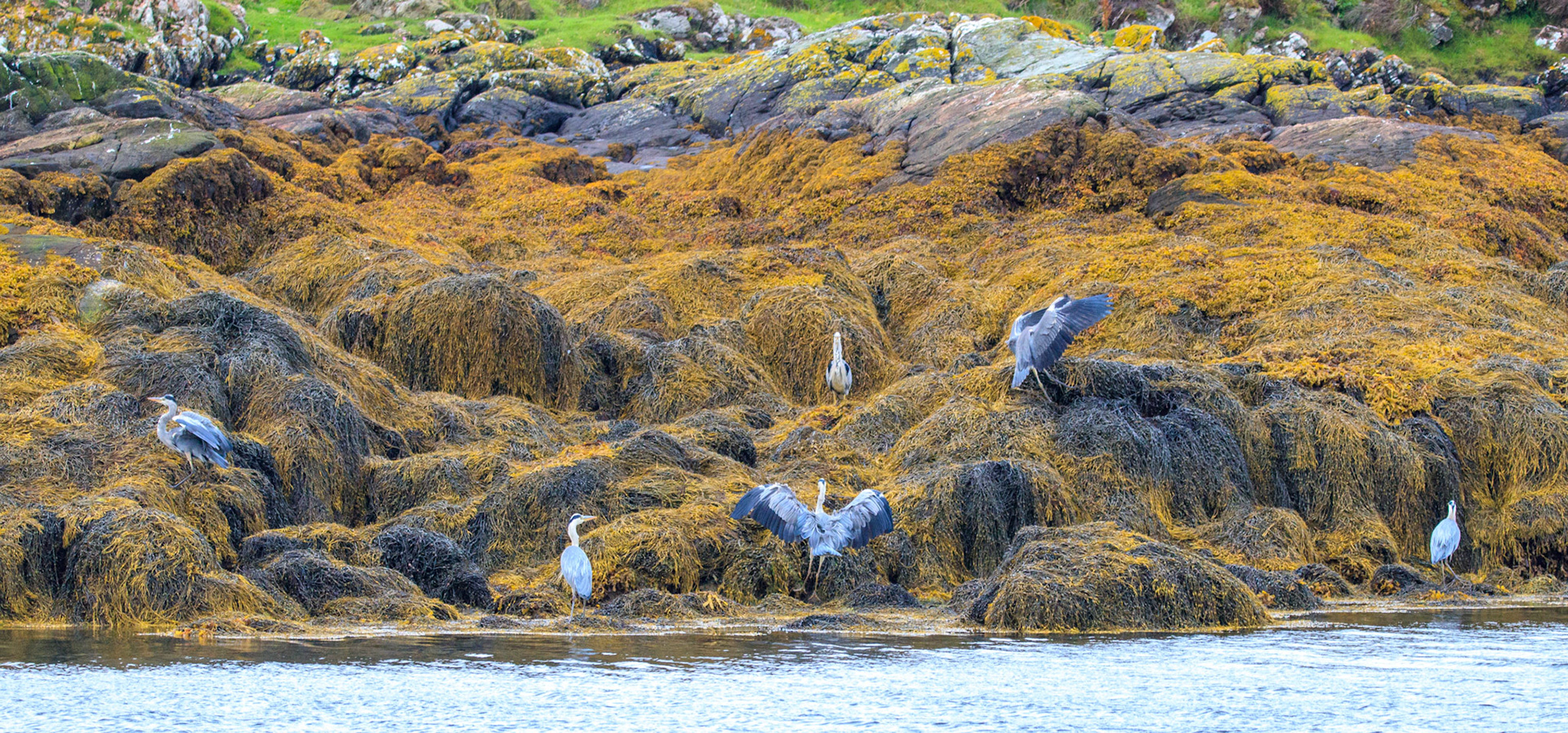
A siege of Herons
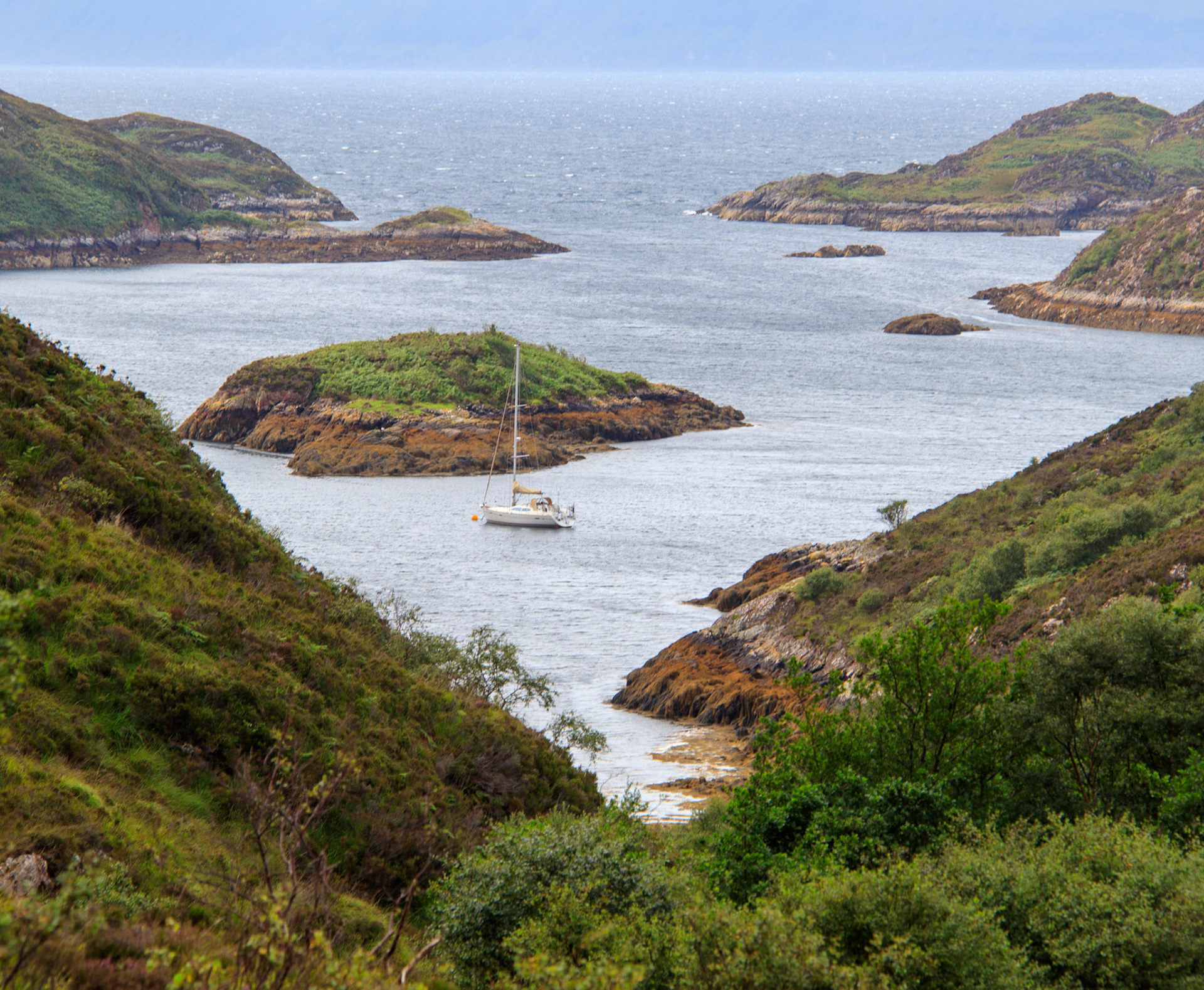
Whimbrel all alone in the Rona Anchorage
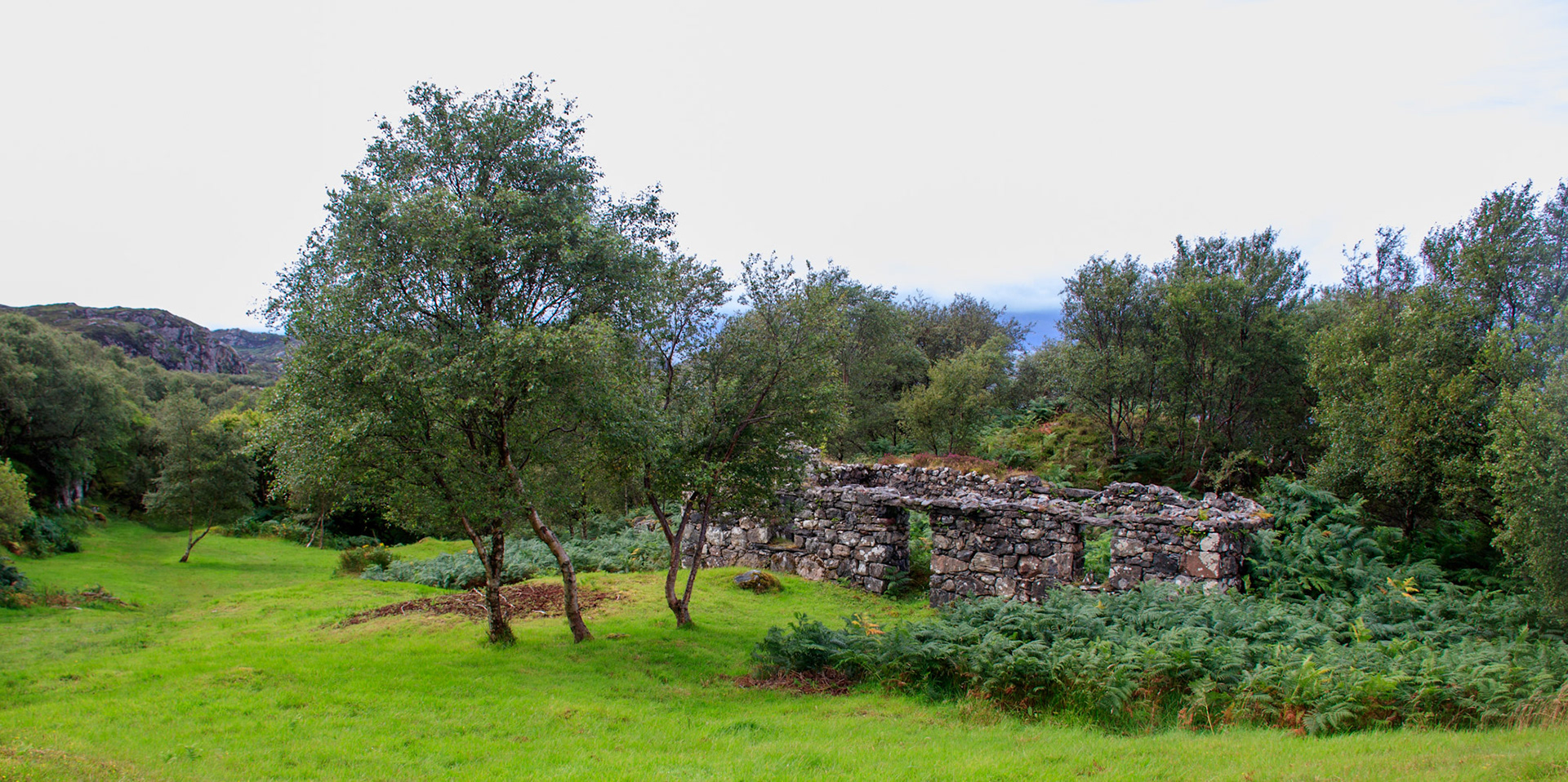
Abandoned croft
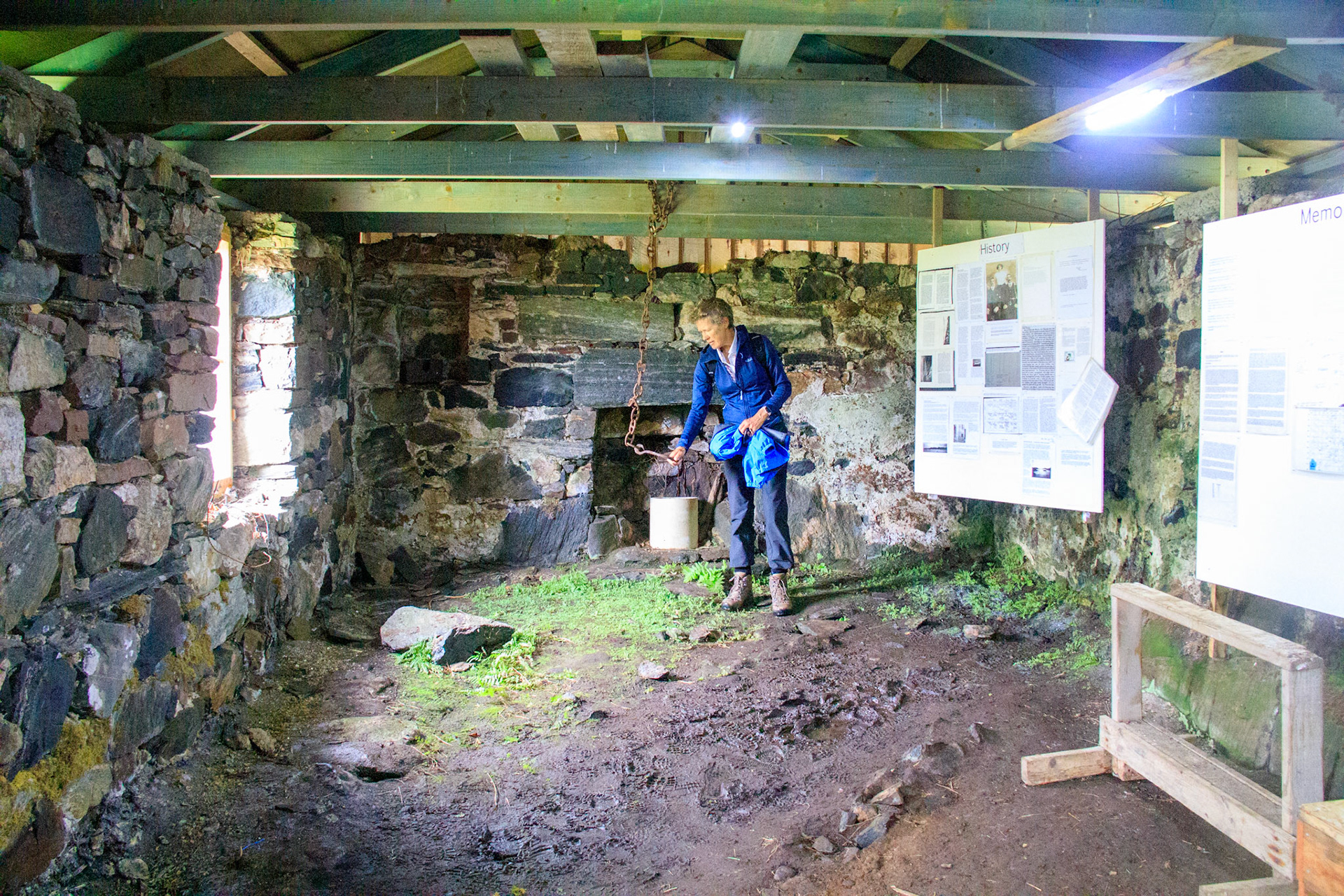
Rona Museum
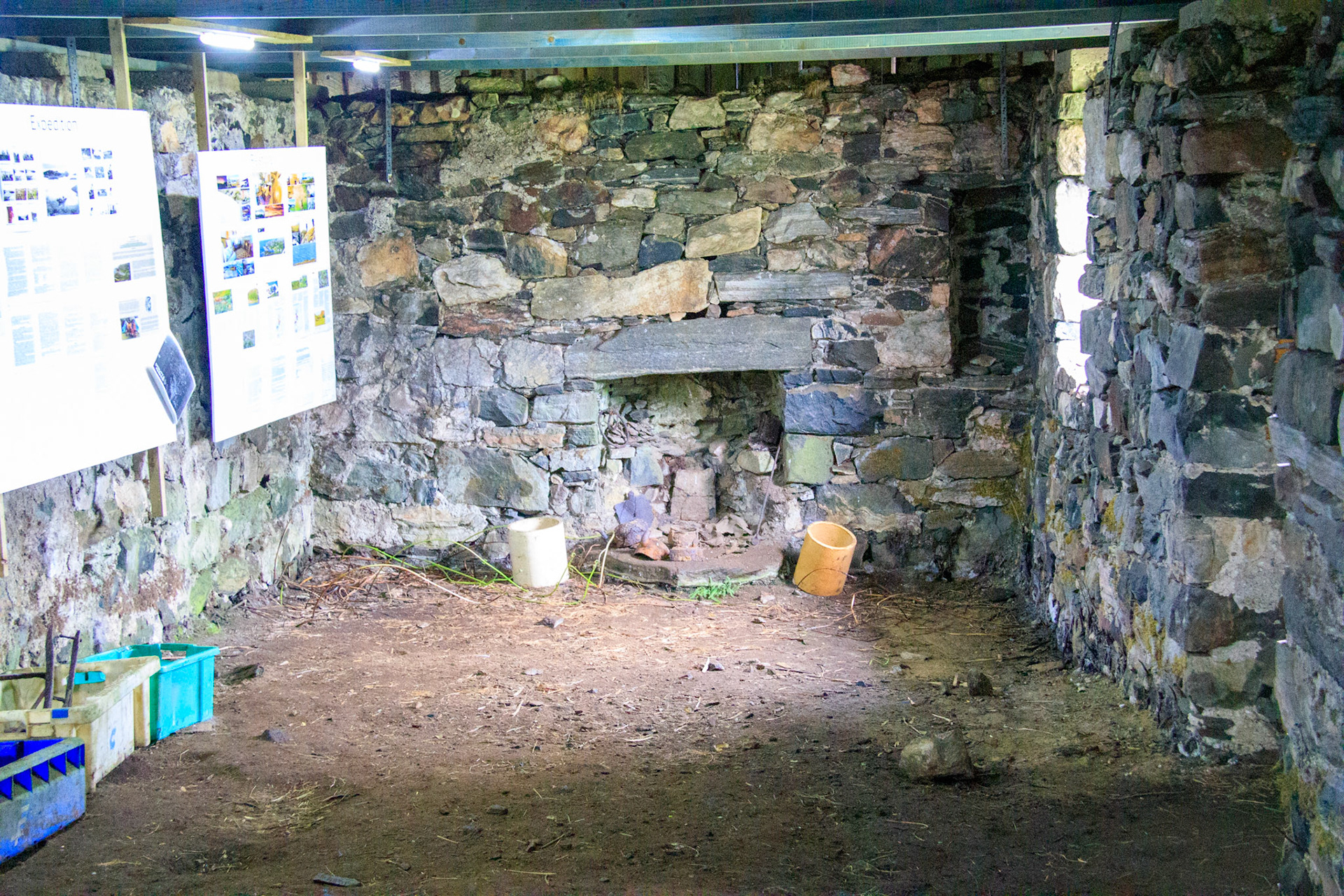
Rona Museum
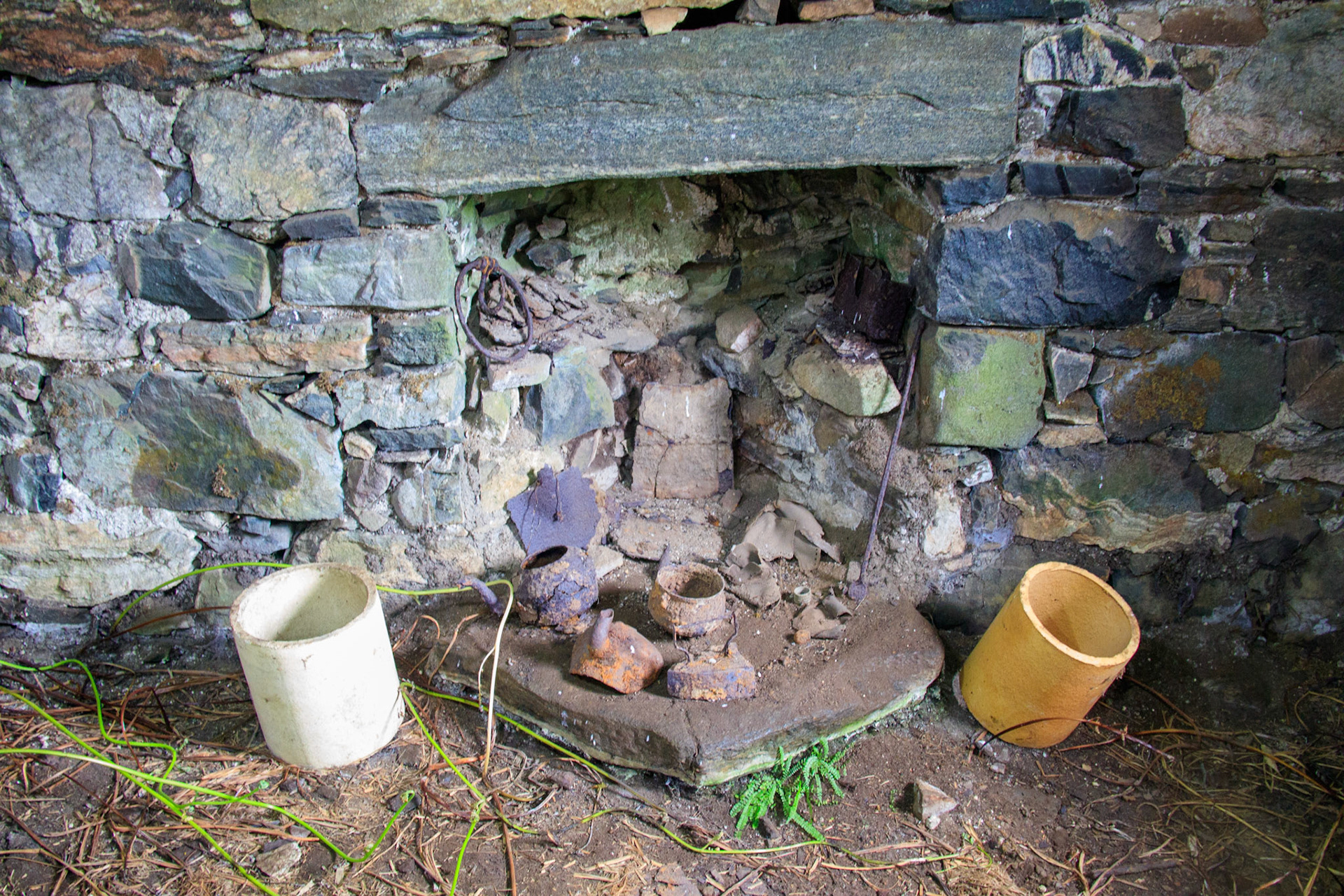
Rona Museum
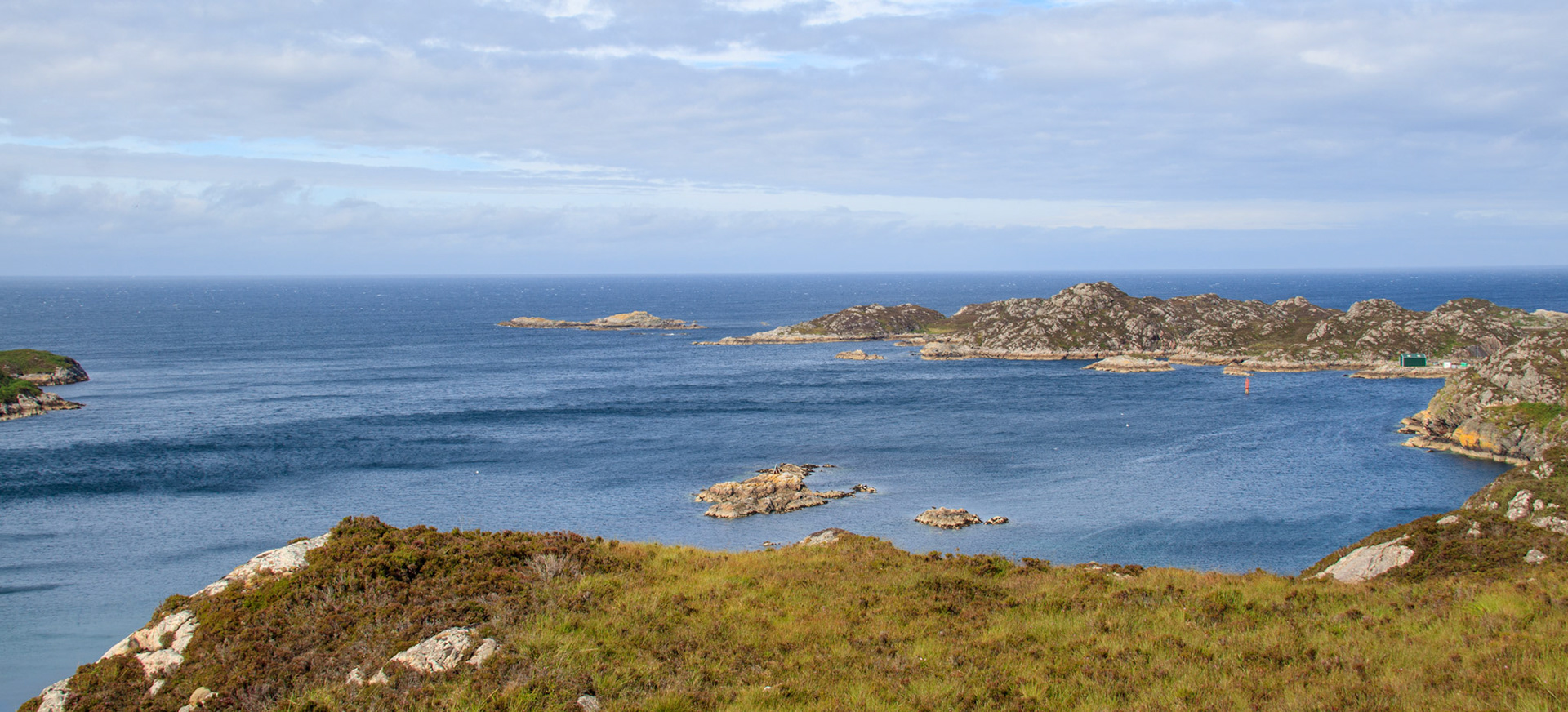
The North end of Rona, MOD building's to the right
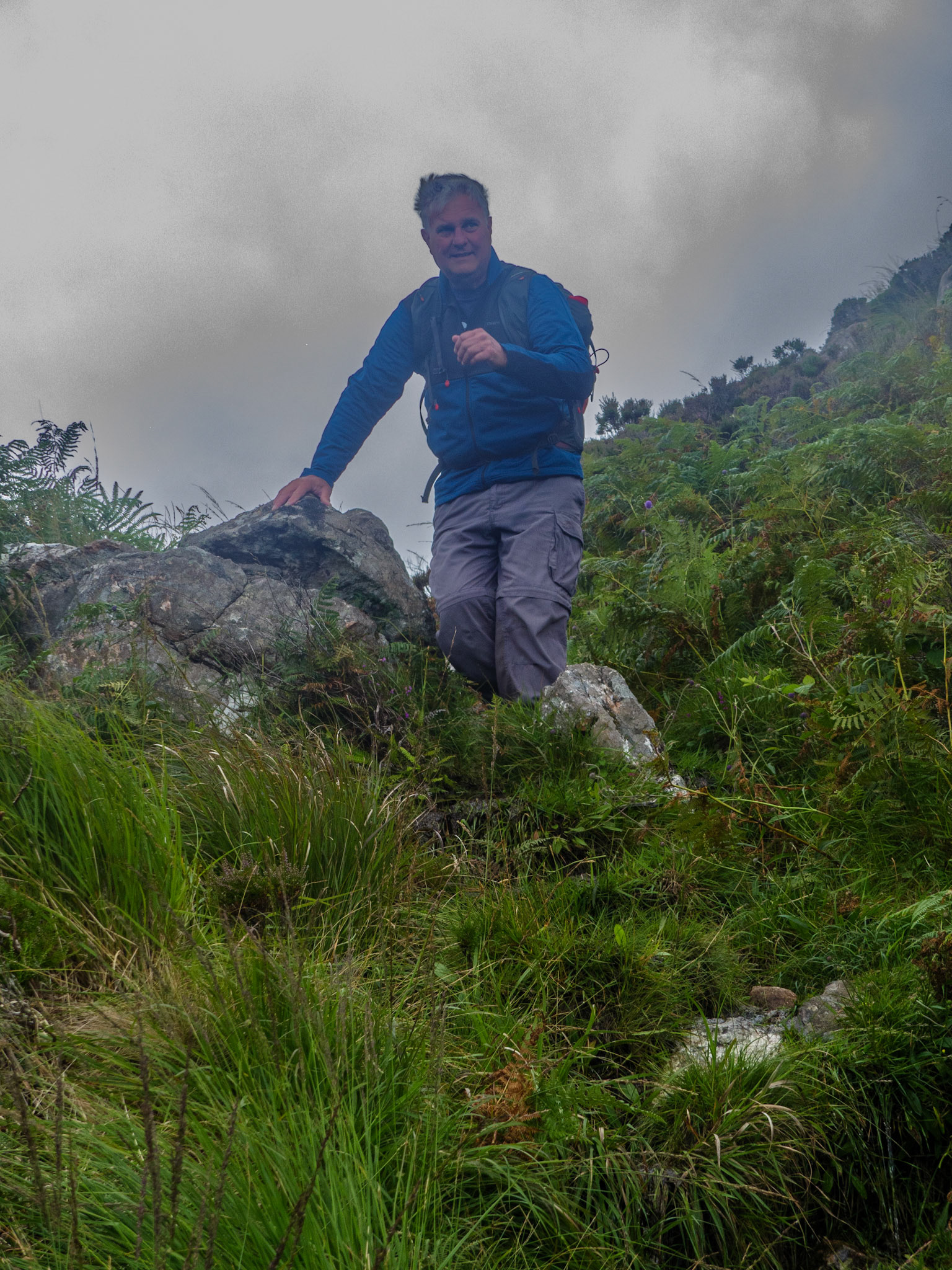
Rona Mountain goat
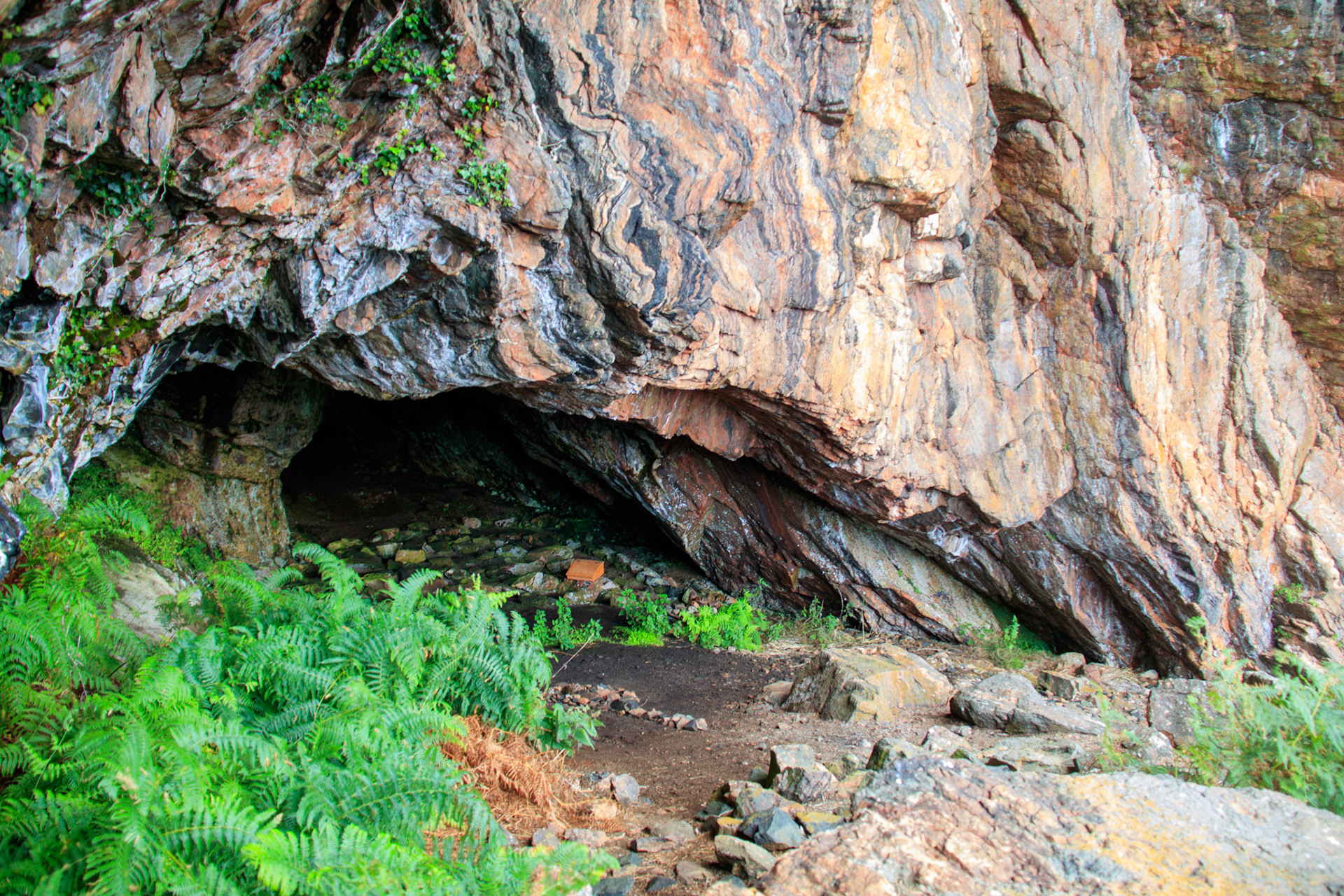
Church Cave
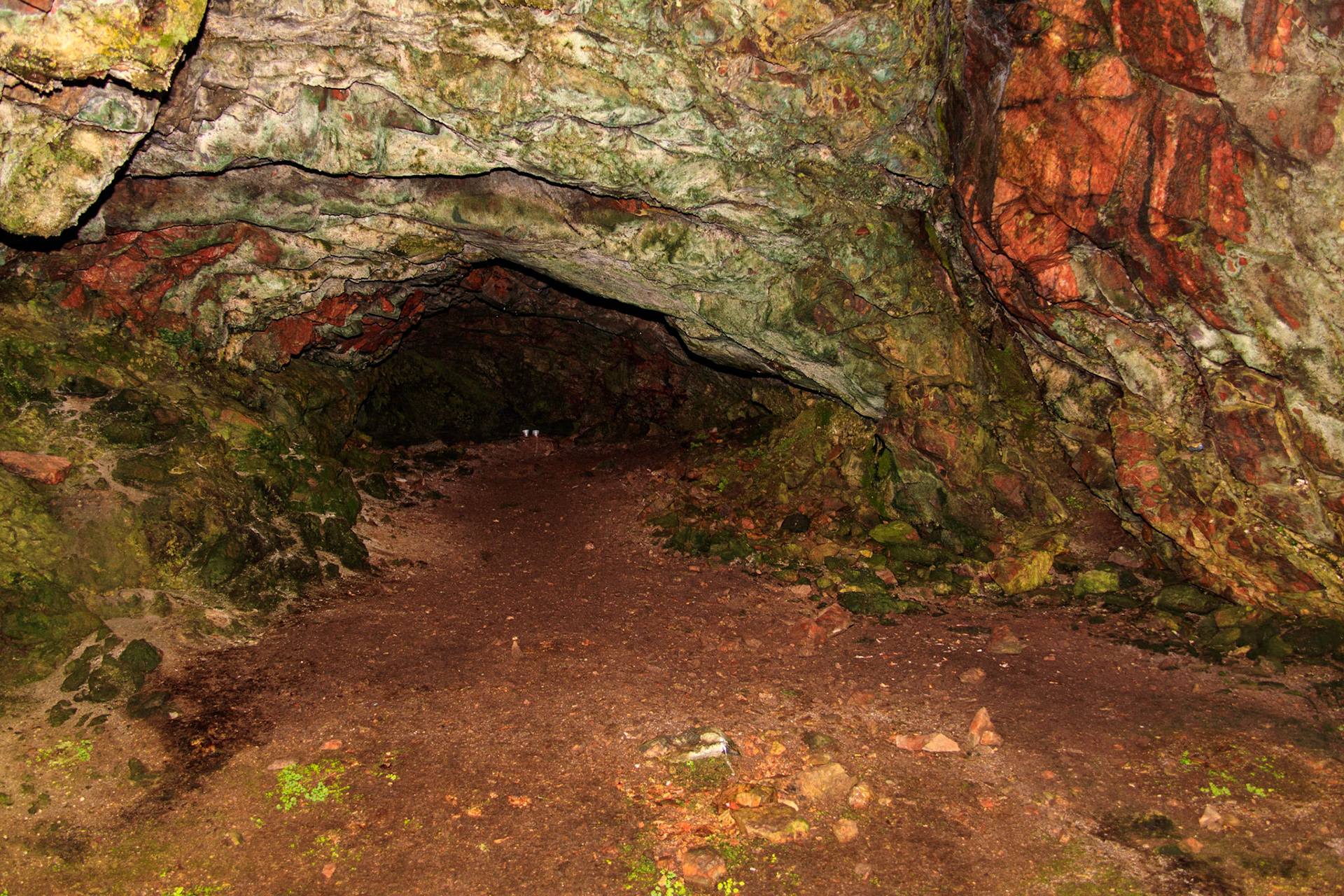
inside church cave
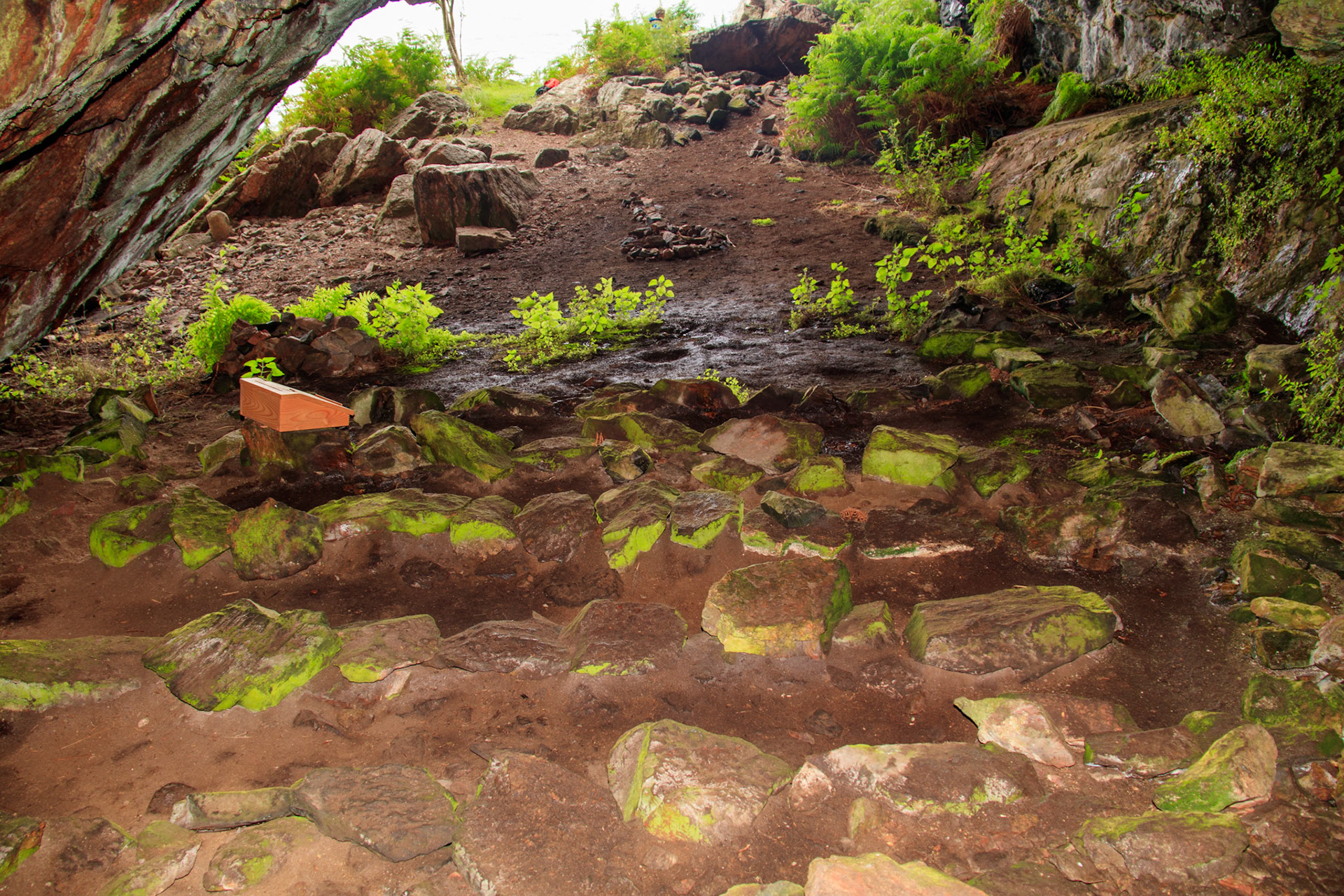
pews inside the cave
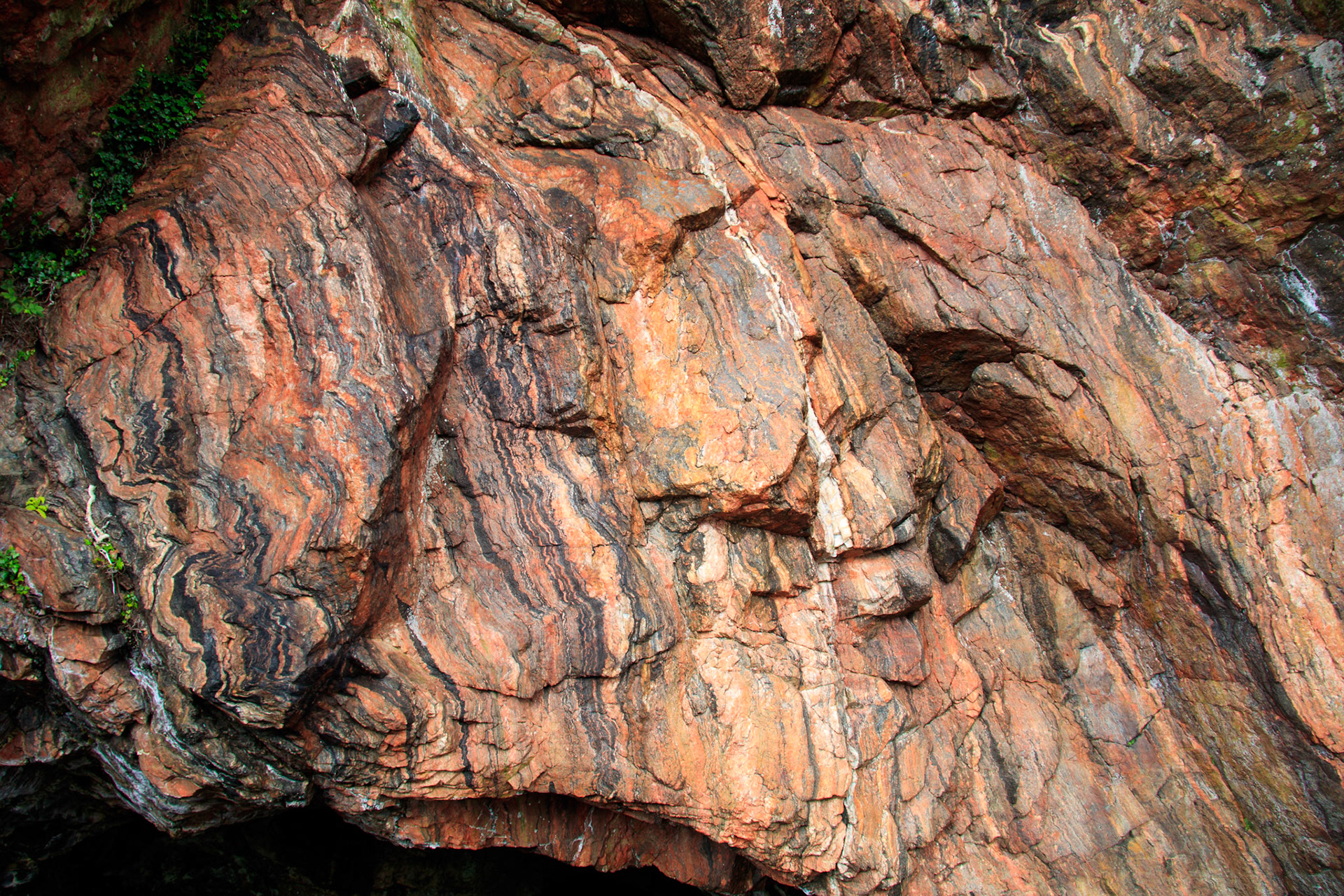
dramatic rock formations
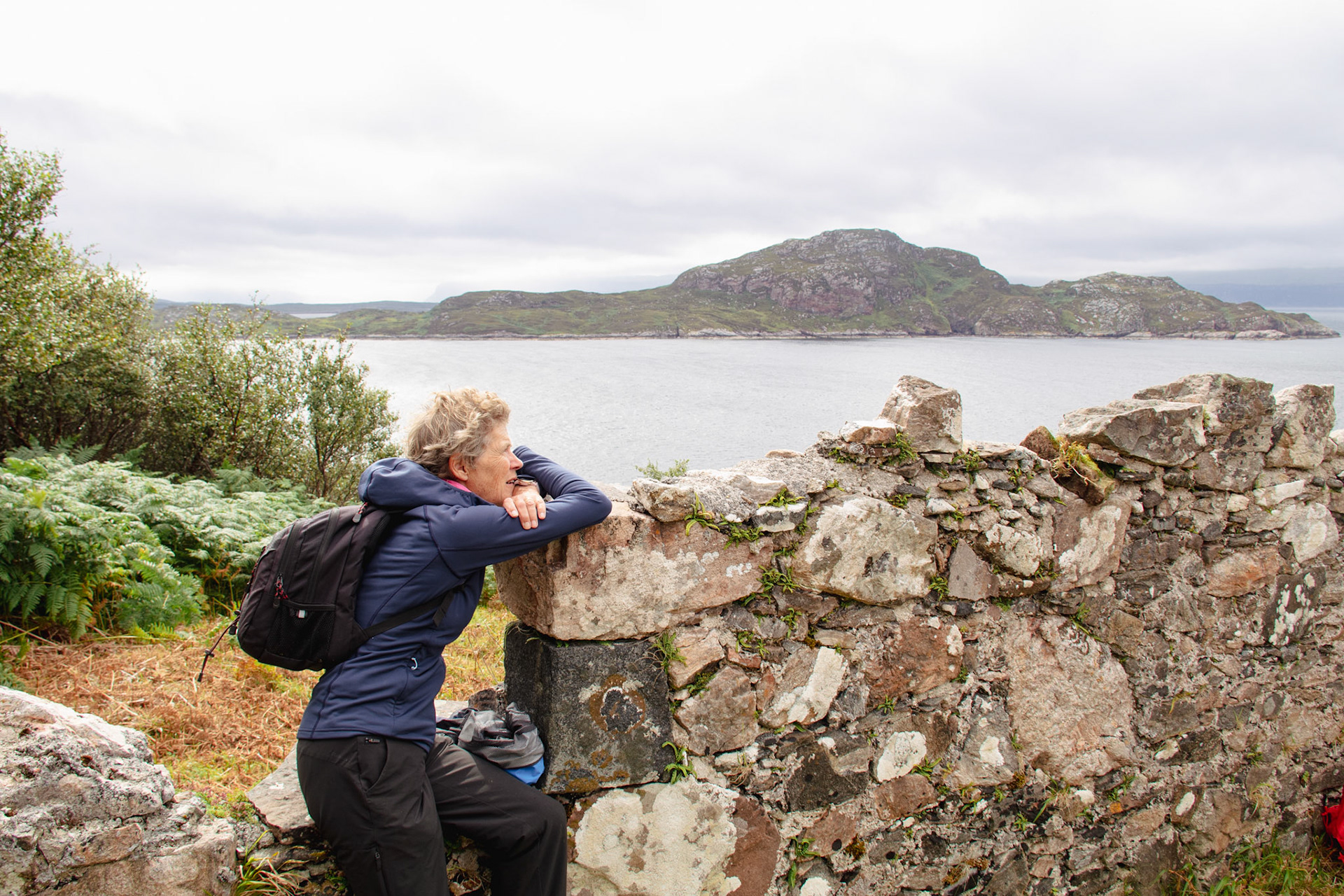
Looking towards Raasay

The old church on the south of Rona
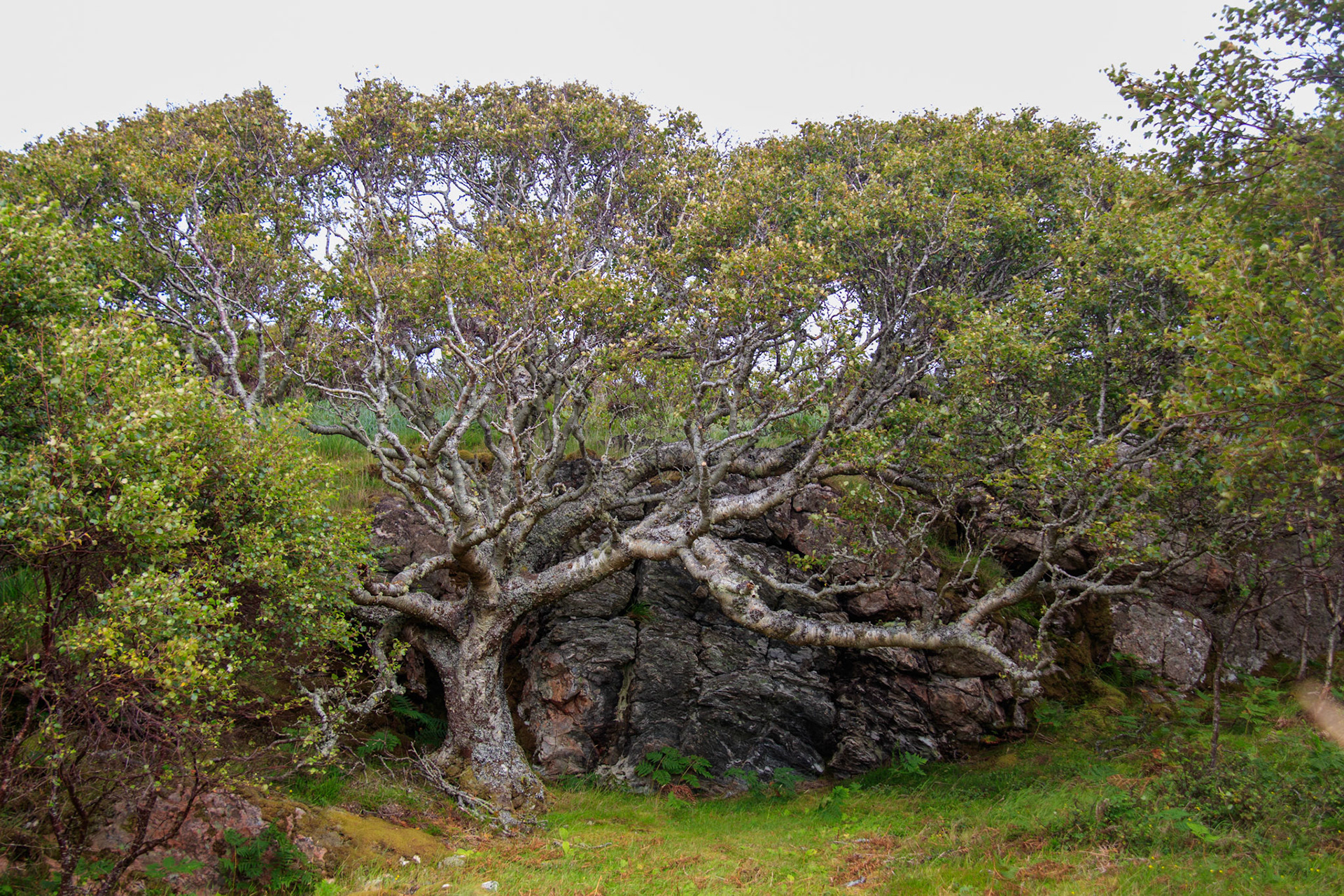
guardian Oaks
Ali climbing up from the cave
Nick scrambling up from the cave
We thoroughly enjoyed our stay on Rona and eventually left on 11 August in a blustery South Westerly wind. With gusts reaching 24Kts (forecast 12kts!!) we had an exhilarating sail in the 2 and half metre swell all the way down Rona Sound to Kyle of Loch Alsh. Under the Skye bridge and an overnight stop in Kyle to top up with essential supplies – we were very short of wine and beer! - saw us leave early afternoon to catch the east going tide to an anchorage further up Loch Alsh. We anchored opposite Eilean Donan Castle and spent many happy hours watching and photographing the seals on the rocky outcrop next to the boat.
Eilean Donan has an interesting history and has changed and developed since it was firs established in the 13th century. In 1719 the castle was garrisoned by 46 Spanish soldiers who were supporting the Jacobites. They had established a magazine of gunpowder, and were awaiting the delivery of weapons and cannon from Spain. The English Government caught wind of the intended uprising and sent three heavily armed frigates The Flamborough, The Worcester, and The Enterprise to quell matters. The bombardment of the castle lasted three days, though met with limited success due to the enormity of the castle walls, which in some places are up to 14 feet thick. Finally, Captain Herdman of The Enterprise sent his men ashore and over-whelmed the Spanish defenders. Following the surrender, the government troops discovered the magazine of 343 barrels of gunpowder which was then used to blow up what had remained from the bombardment…
For the best part of 200 years, the stark ruins of Eilean Donan lay neglected, abandoned and open to the elements, until Lt Colonel John Macrae-Gilstrap bought the island in 1911. Along with his Clerk of Works, Farquar Macrae, he dedicated the next 20 years of his life to the reconstruction of Eilean Donan, restoring her to her former glory. The castle was rebuilt according to the surviving ground plan of earlier phases and was completed in the July of 1932. To me the photos show a castle that has been patched together over the years!
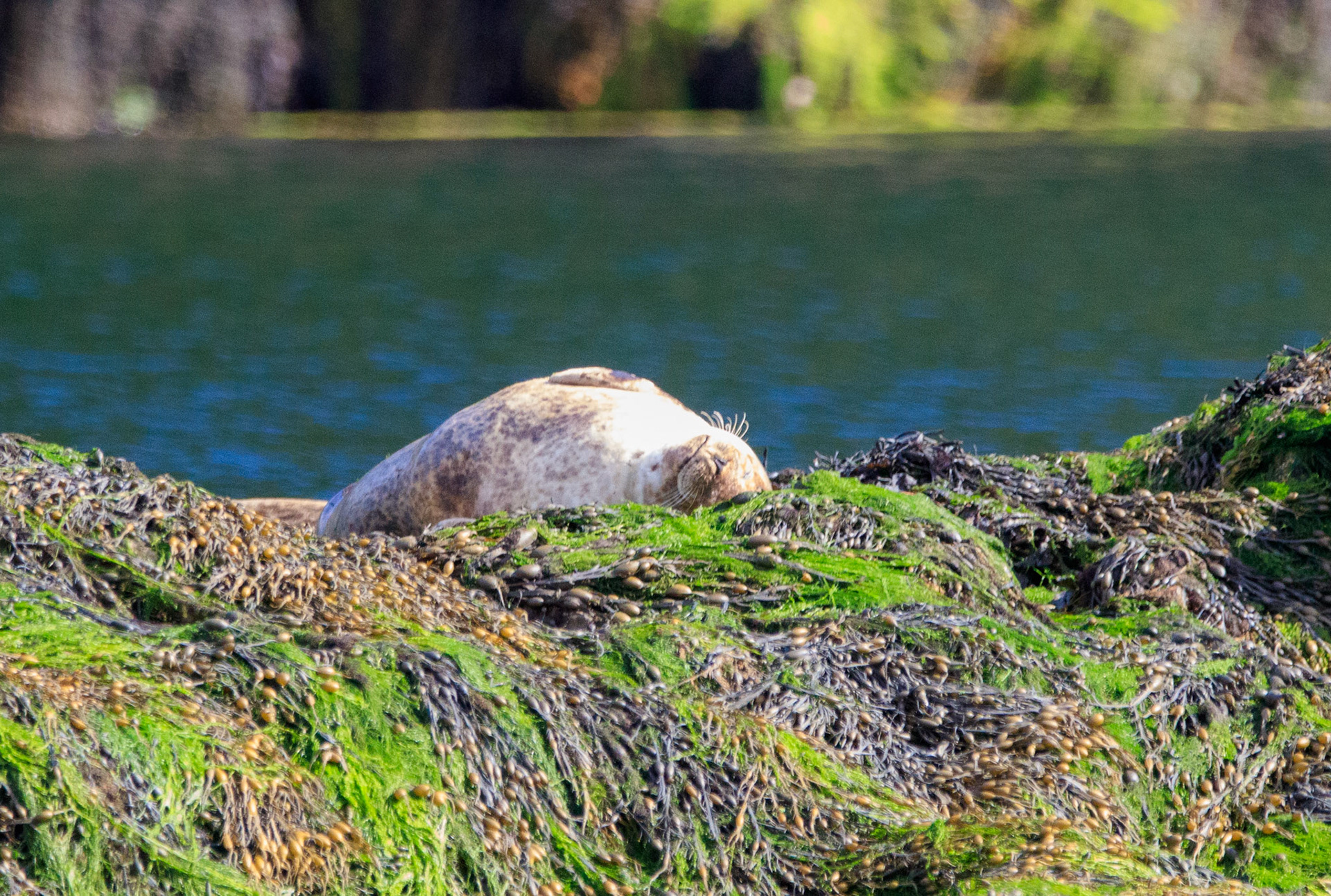
I am sleepy mum
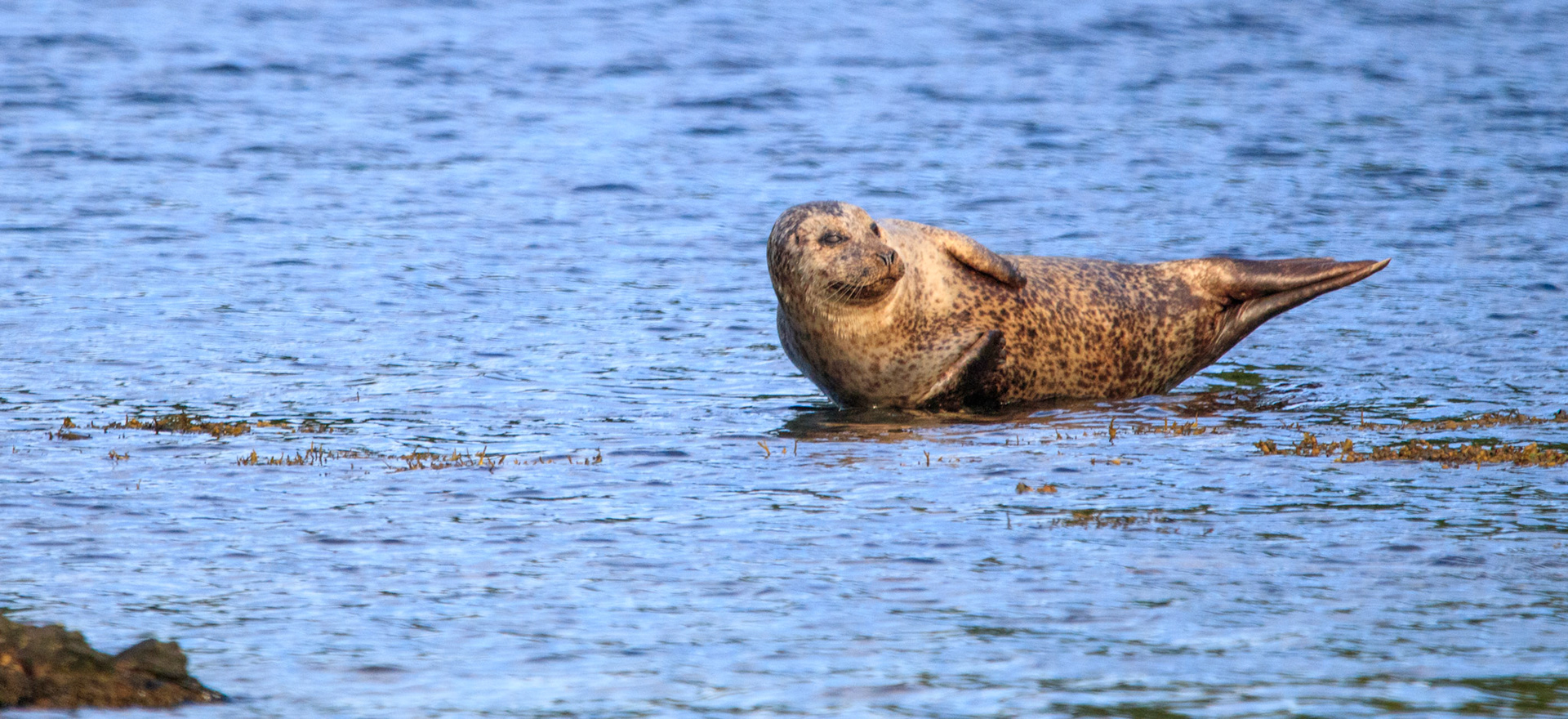
I dont like getting my toes wet
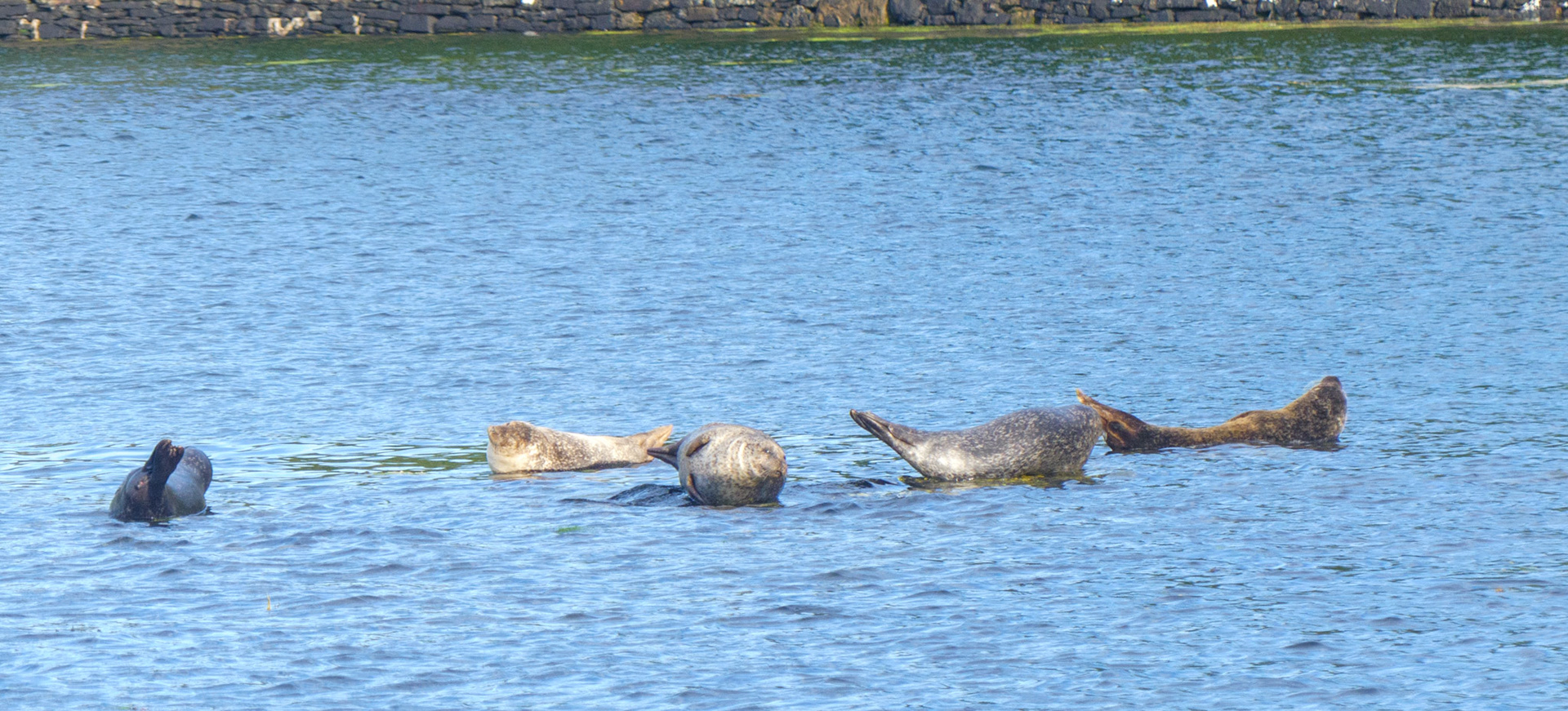
clinging on
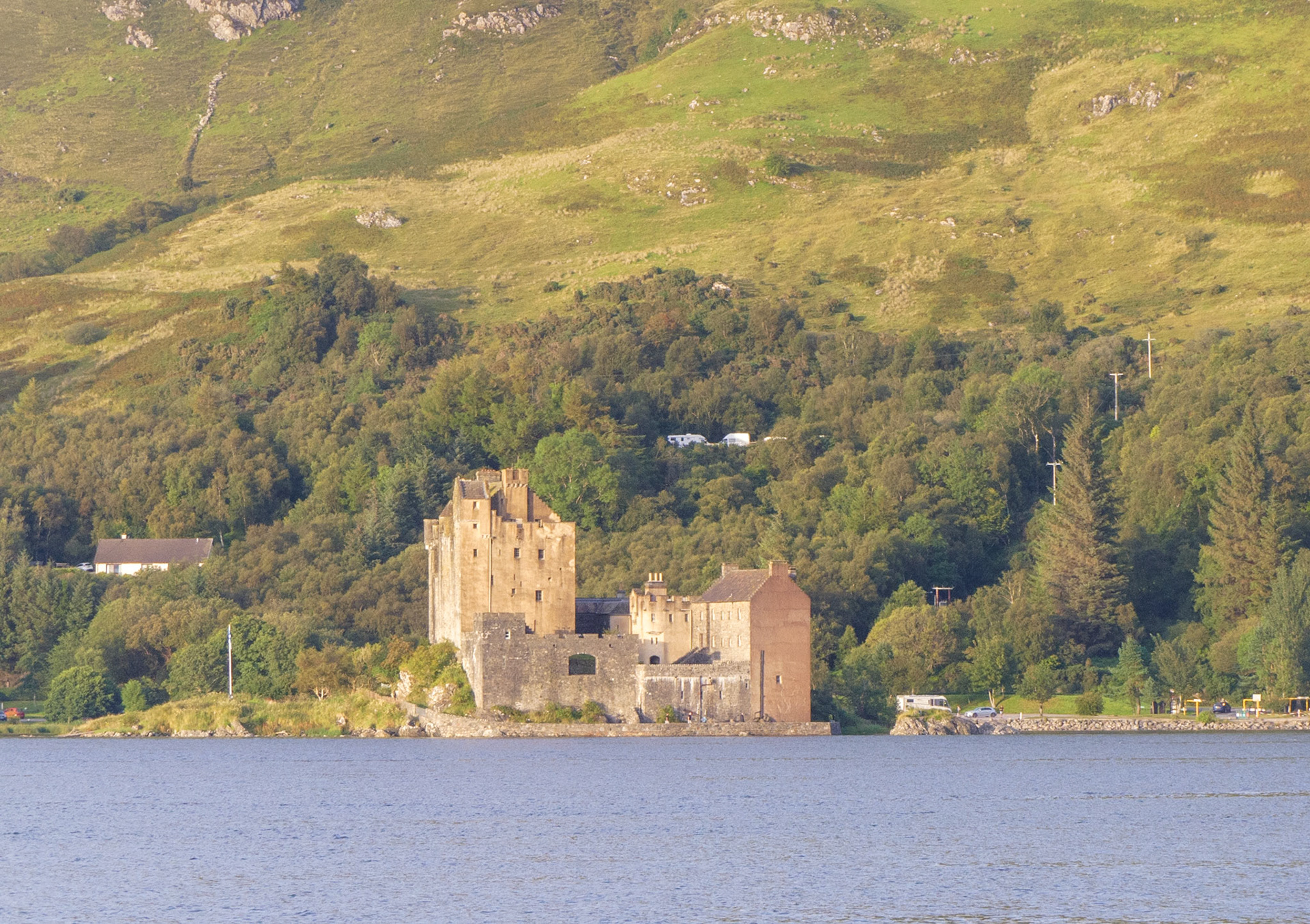
eilean donan castle
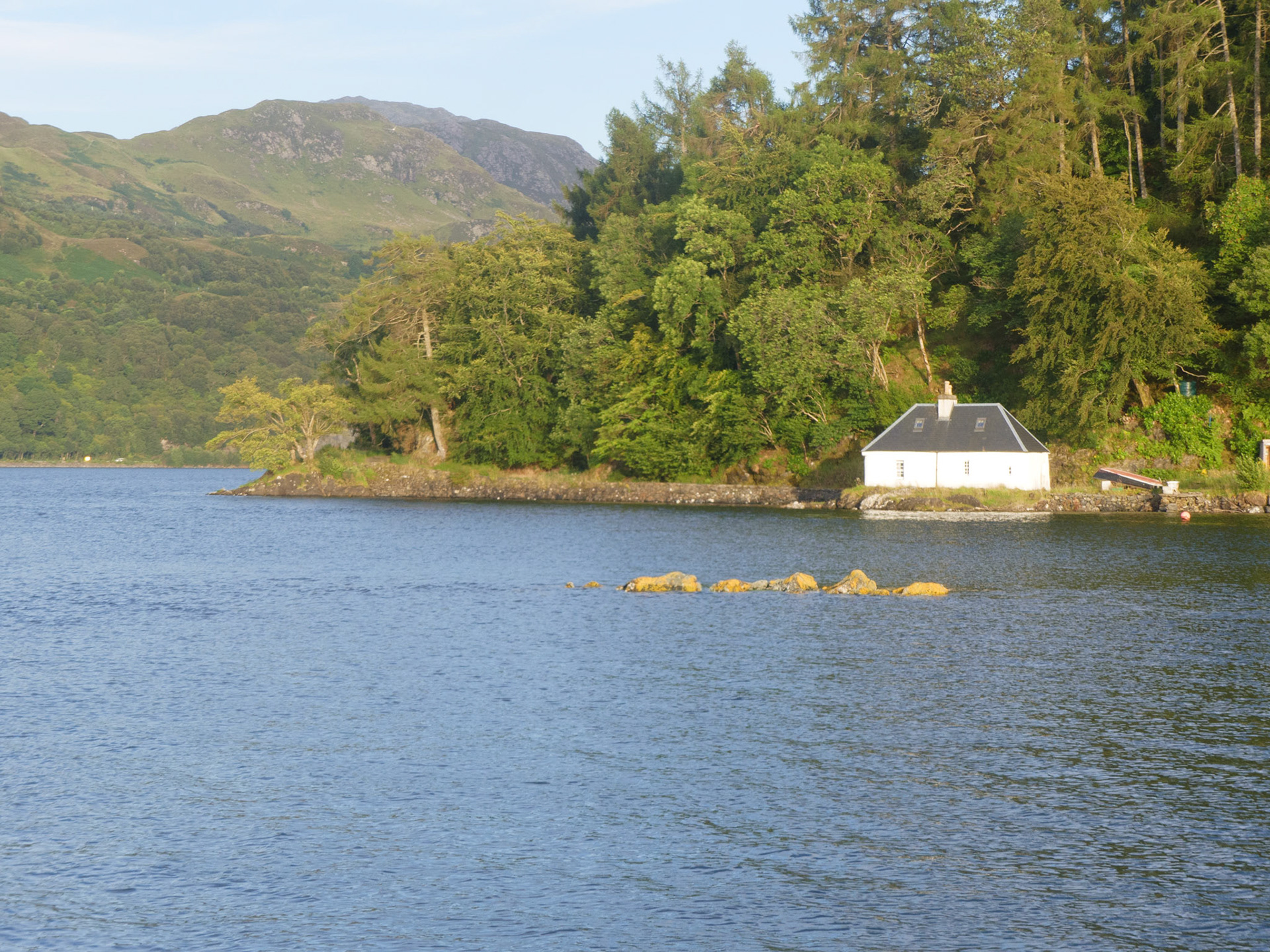
High tide at our Anchorage
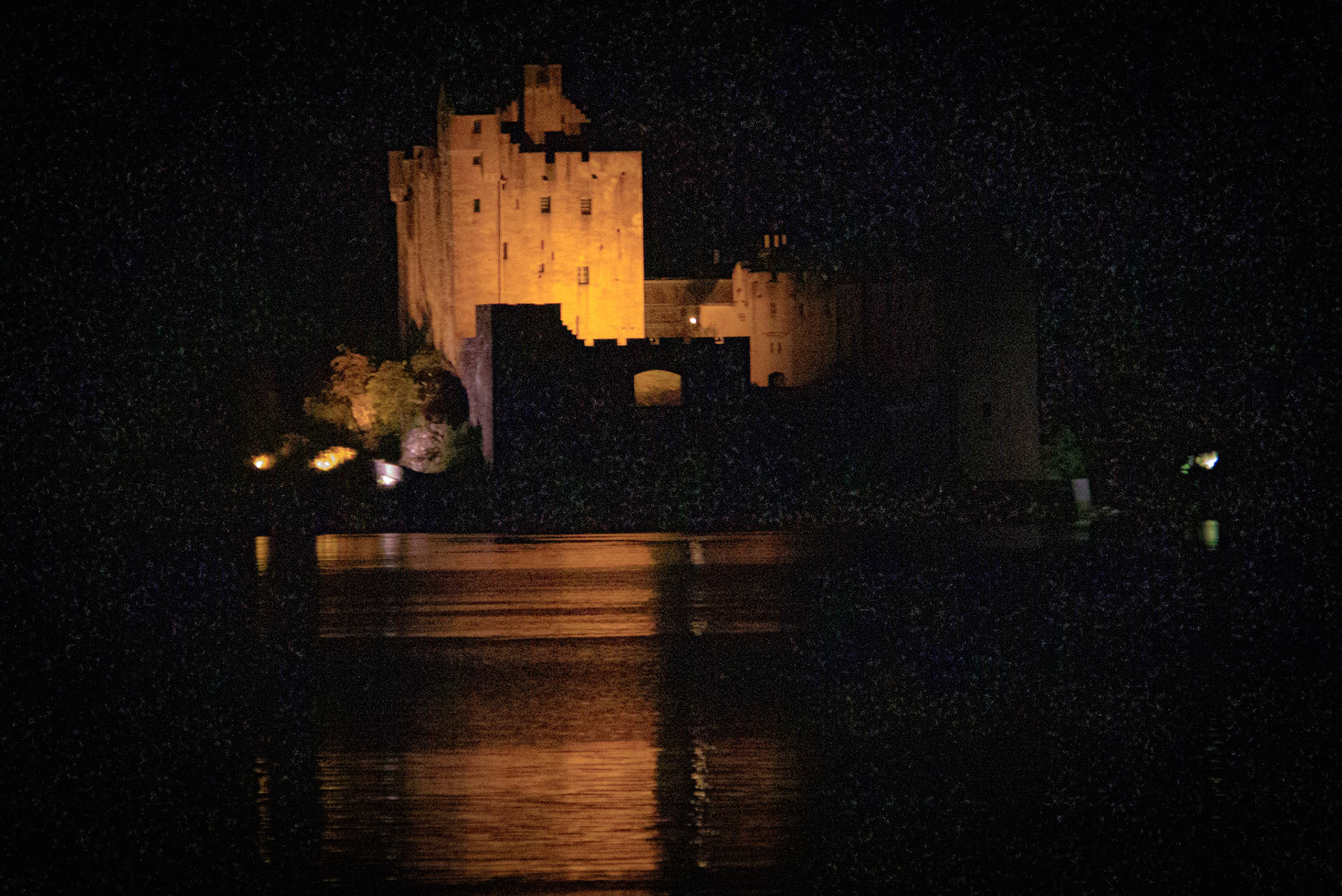
eilean donan castle at night
The tides were good for us to traverse the Kyle Rhea about 1100 on 13th August so we left our delightful anchorage in not a breath of wind and motored down through the Sound of Sleat and into Loch Nevis. Our destination was Inverie which boasts the most remote pub in the UK with walkers having to walk 18 miles to reach it as there are no roads in or out! The Old Forge - A Community-owned pub We arrived to the strains of a local chap singing Bob Marley hits on the beach and took a buoy just off the pub front for a couple of days. A quick check of the local hostelry which is community owned and provides much needed R and R for the walkers and locals saw us back on board for a supper up top. This was a great event for us – the second of the whole summer and we were amazed to see a minke whale cruising up the loch with the tide to catch his supper and back again.
Emboldened by this display of summer we walked into the hills around Inverie on Sunday and got caught in an almighty thunderstorm that echoed and flashed around us for well over an hour. Wet through and hungry we retired to the pub who were more than welcoming to all the drowned travellers who turned up. Back to the boat after a couple of pints and we ran the engine and dried out our wet stuff as best as possible. As the sun came out in the evening we rowed ashore to listen to the live folk music from a local group who were singing in the bar. Another wonderful evening in this bay with a further visit from the minke.

fleeing south away from the kyles fog bank

cuillans mountains on Sky
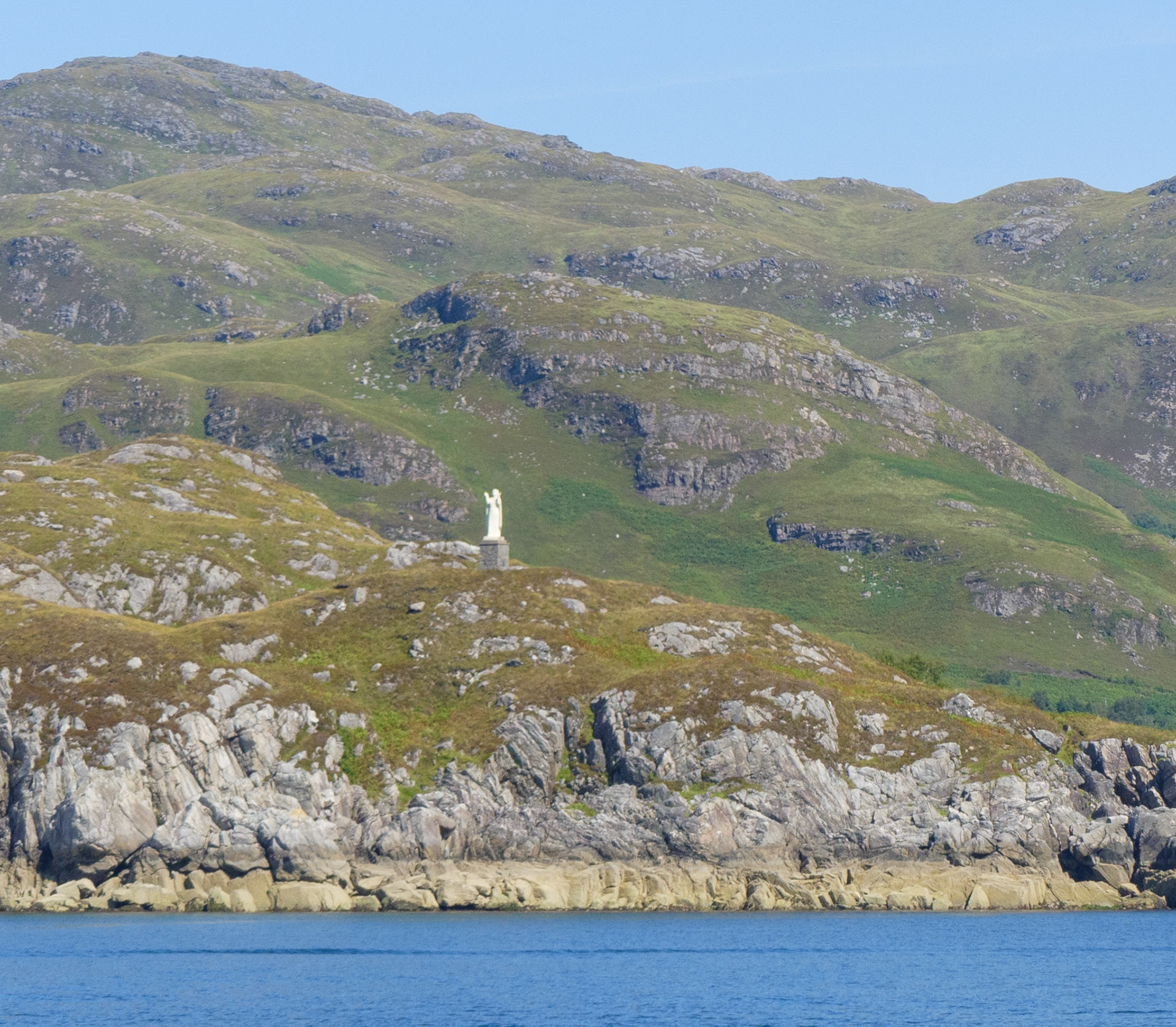
Statue approaching Inverie
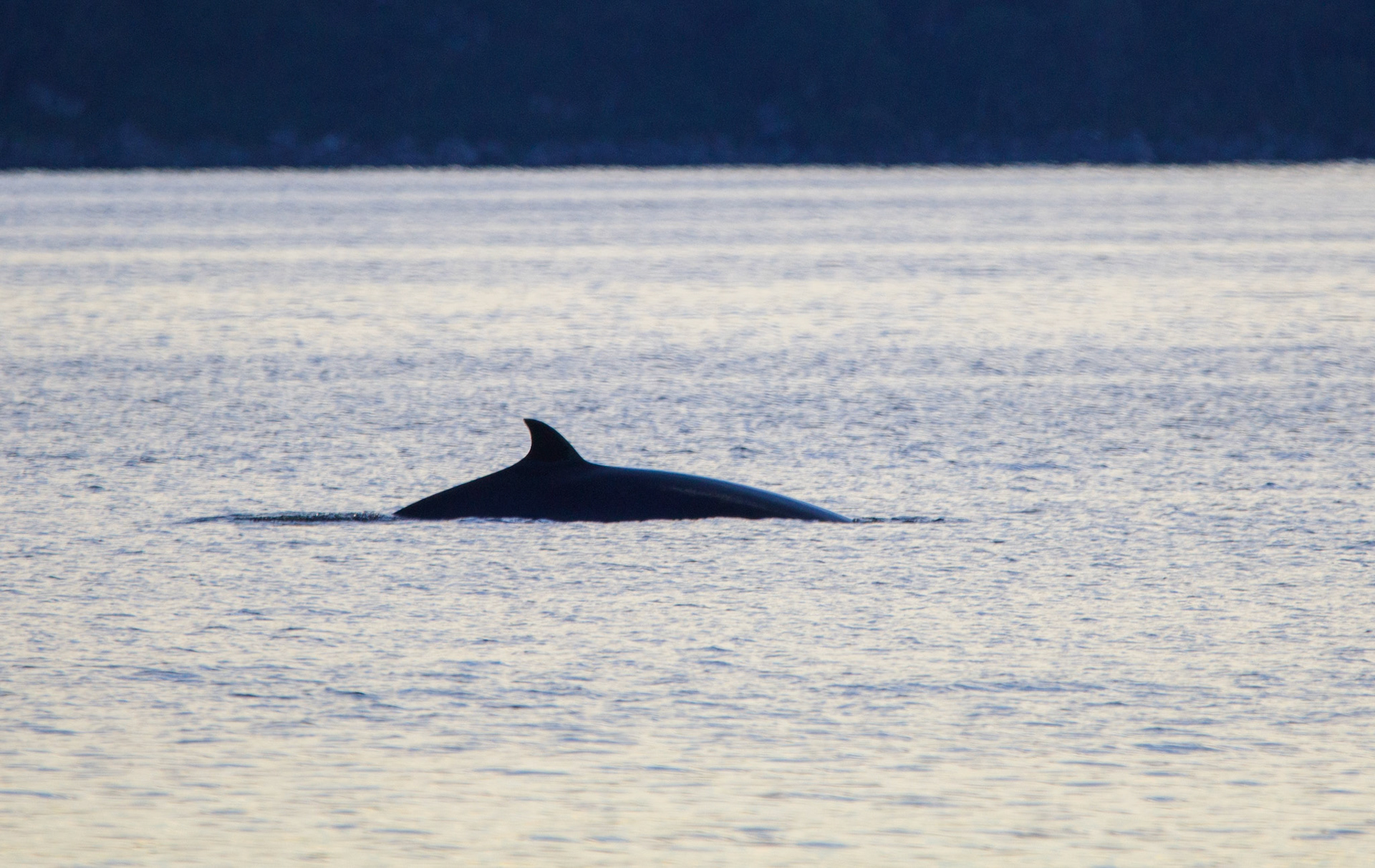
Minke whale swan past on the incoming tide
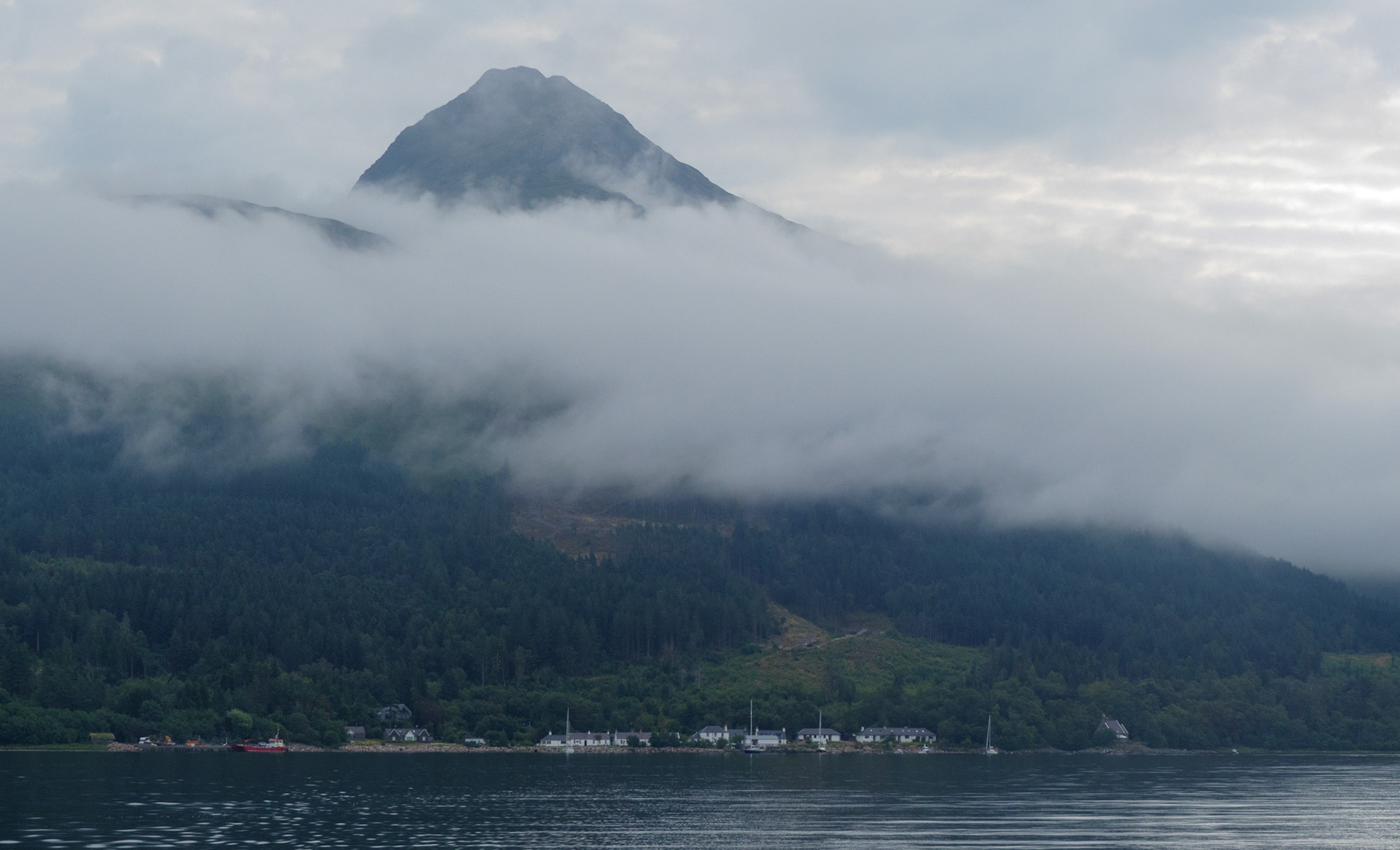
Inverie in the rain
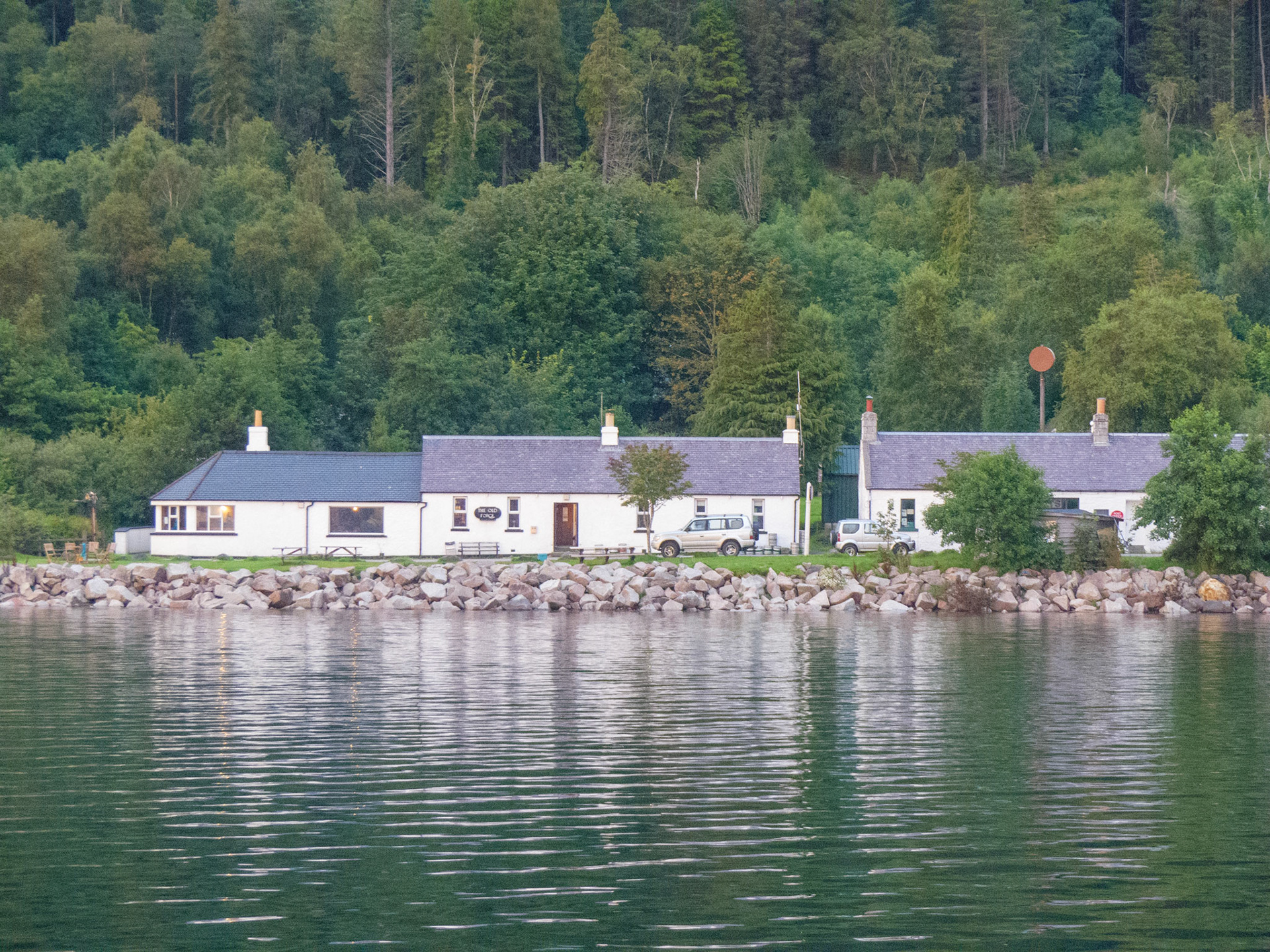
the old forge Inn
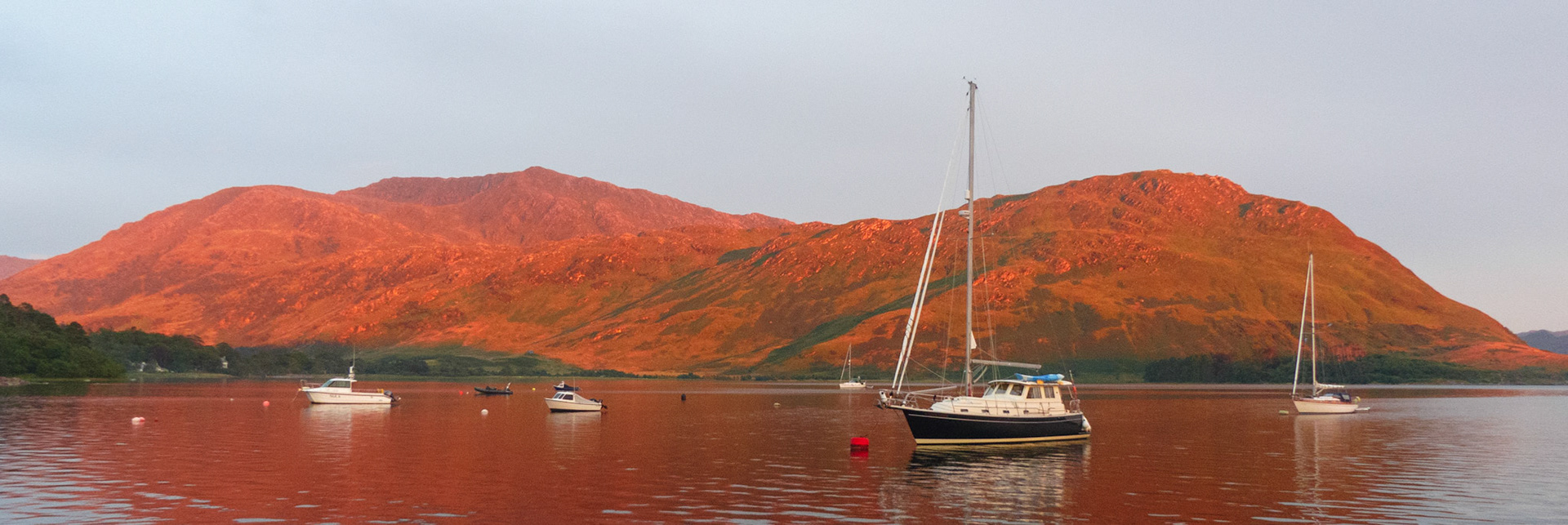
sundown reflected on the hills at inverie
We left on 15th August and made a good sail to Arisaig, a pretty harbour, with beautiful white sandy beaches and huge rocky shoreline when the tide is out. A tricky little entrance with useful withy posts showing the channel that must be followed in exact order to avoid any mishaps on the rocks. Another couple of windy days on the visitors mooring buoy, laundry and showers completed and we left Arisaig to round Ardnamurchan point heading for Tobermory. That was another cracking sail with initially full sail, then a reefed main then a reefed genoa then everything away as the wind died then everything out again for the last hour as the wind picked up in sound to 23 knots and led us around the lighthouse into the harbour. Averaging around 6.5 knots to the point we sped around the rocky headland and came through a few swellies thankfully unscathed from our second rounding. On approach to Tobermory the rain set in and stayed for a couple of days. However we did do a whisky tour at the distillery but sad to say we are still not whisky fans. We did find the Isle of Mull cheese shop tucked away in the hills behind Tobermory and enjoyed much of their produce over the next few days.
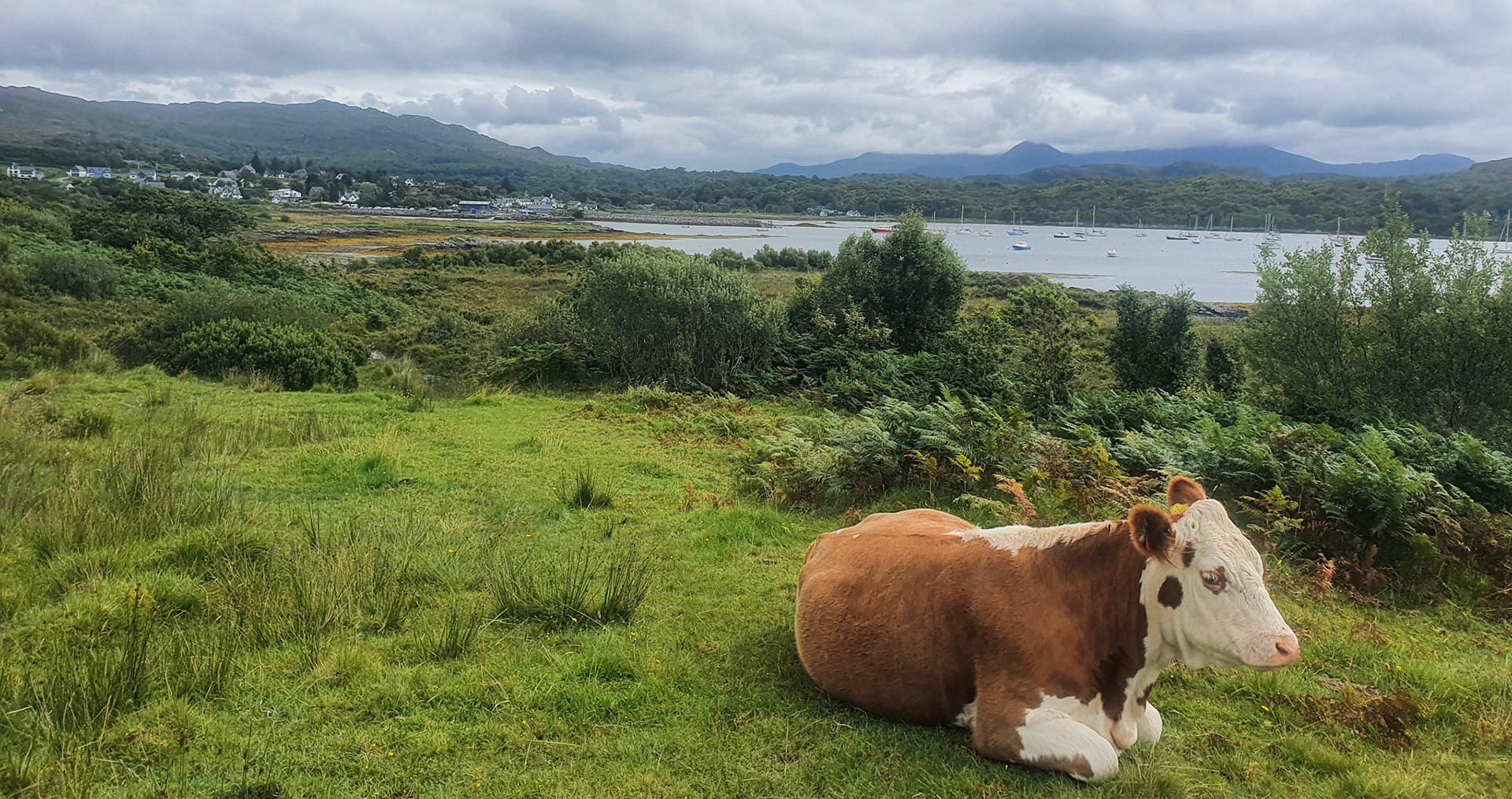
Arisaig
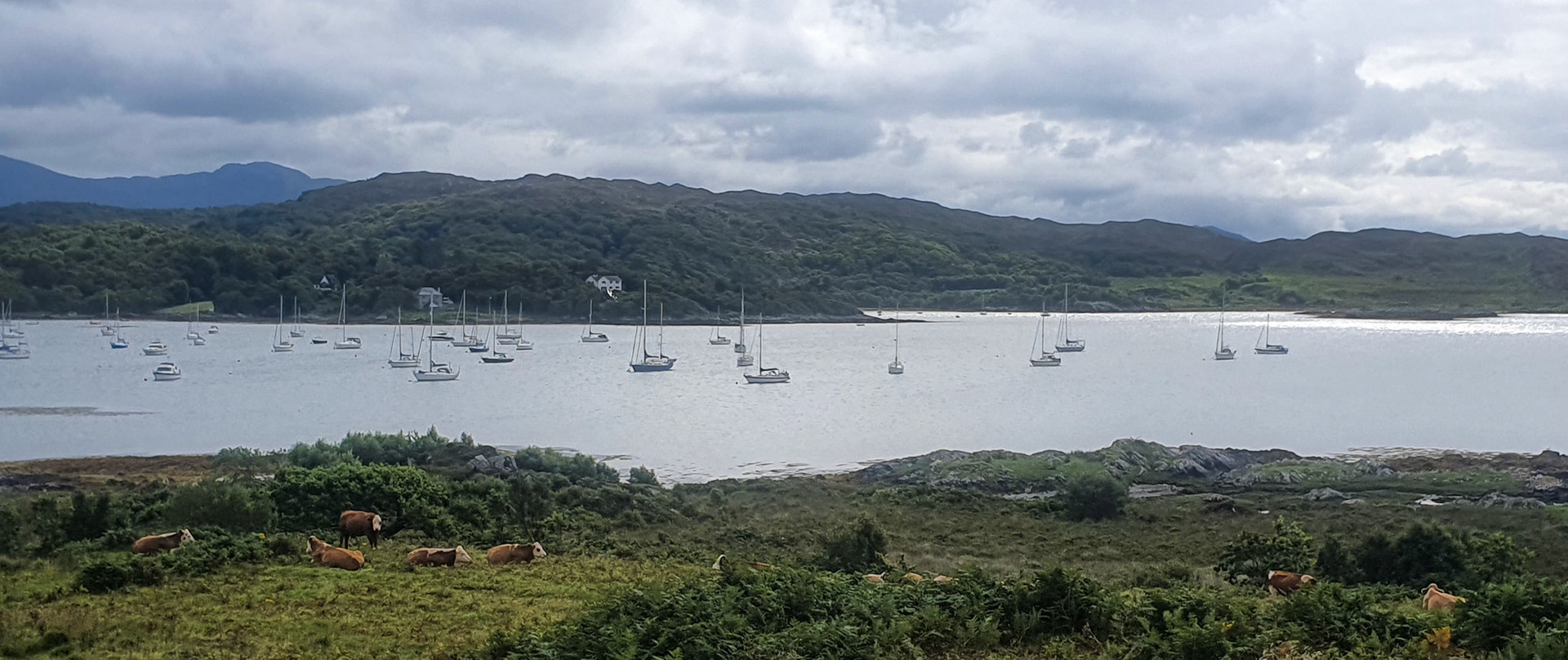
Arisaig harbour
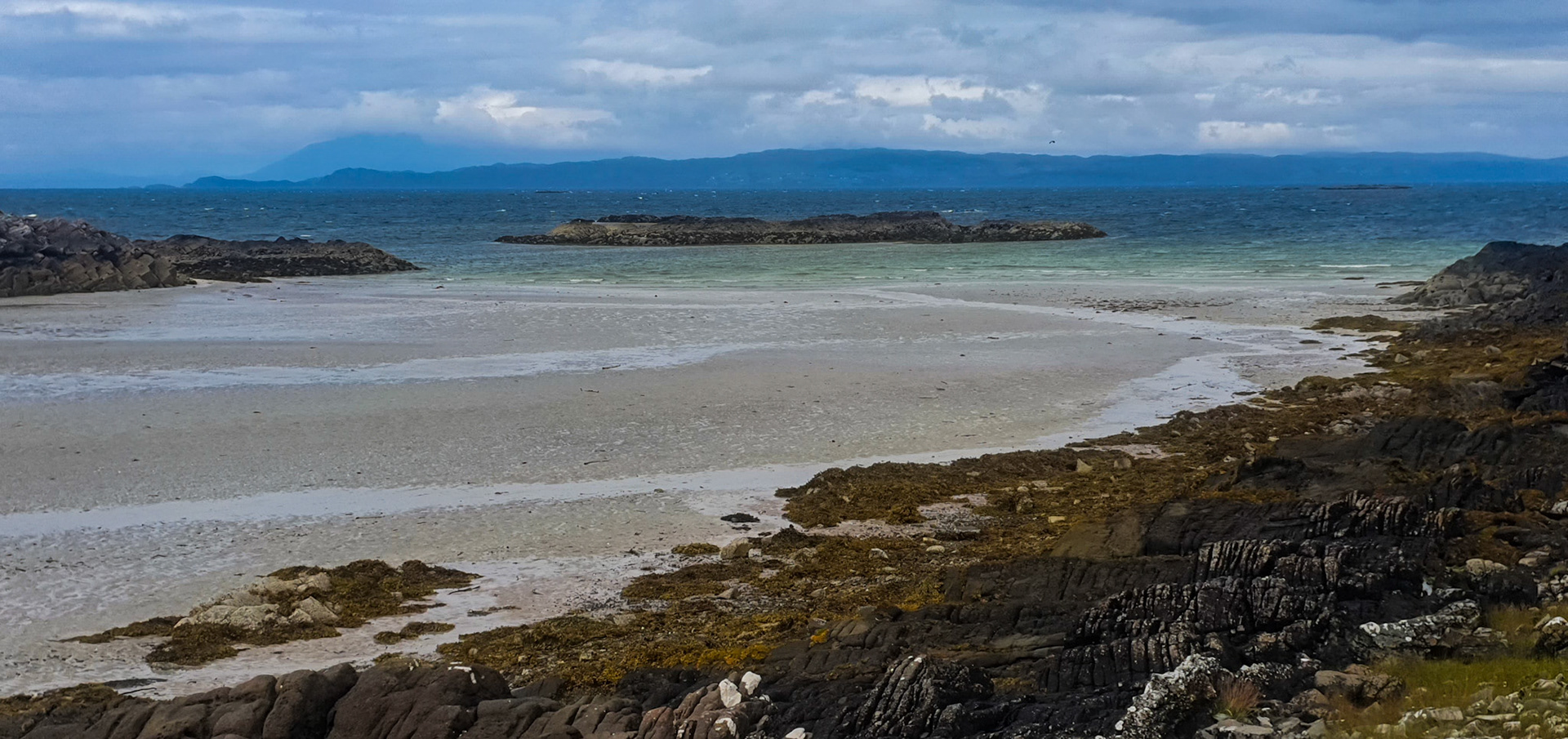
Caribbean beaches in arisaig
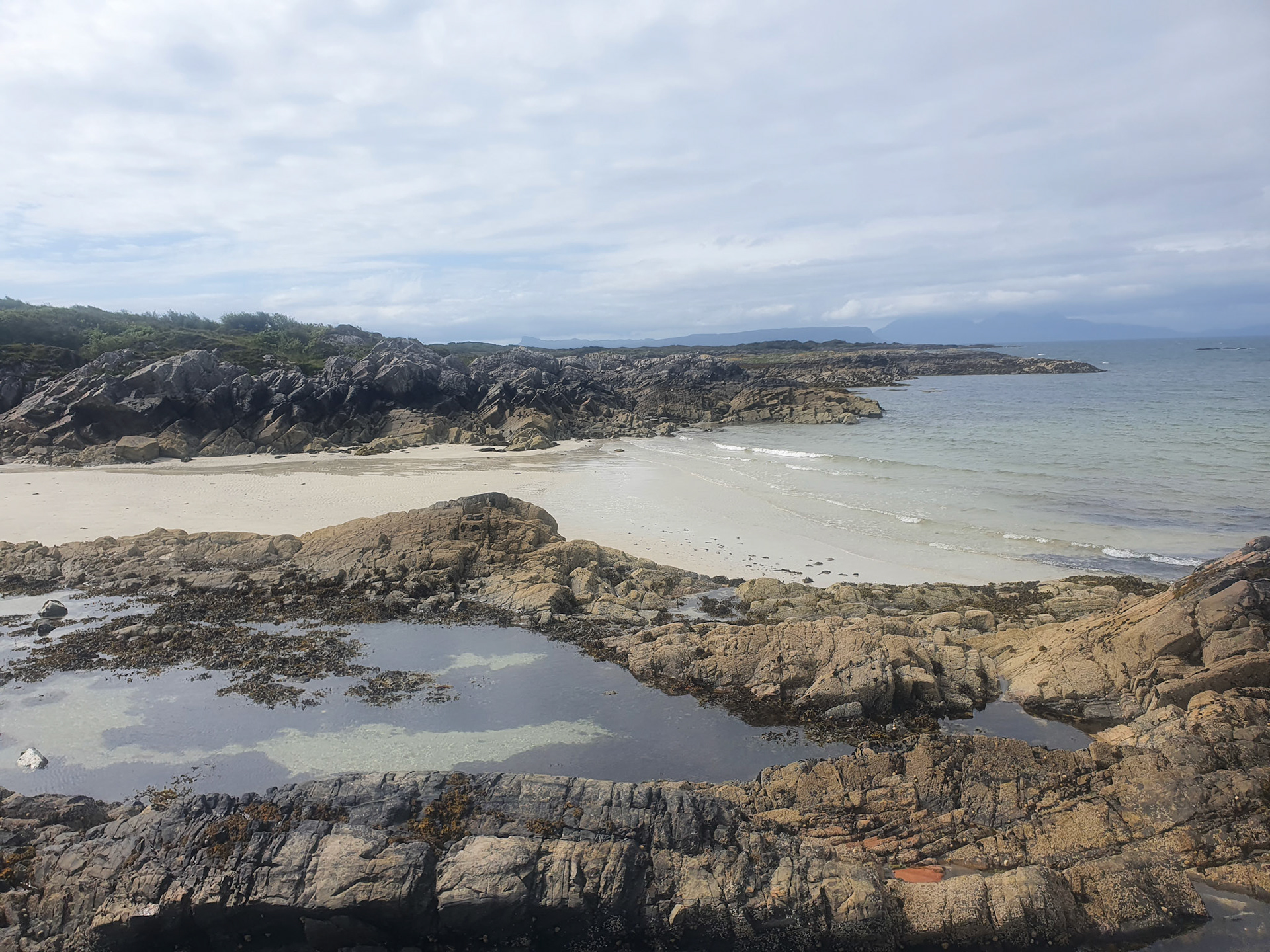
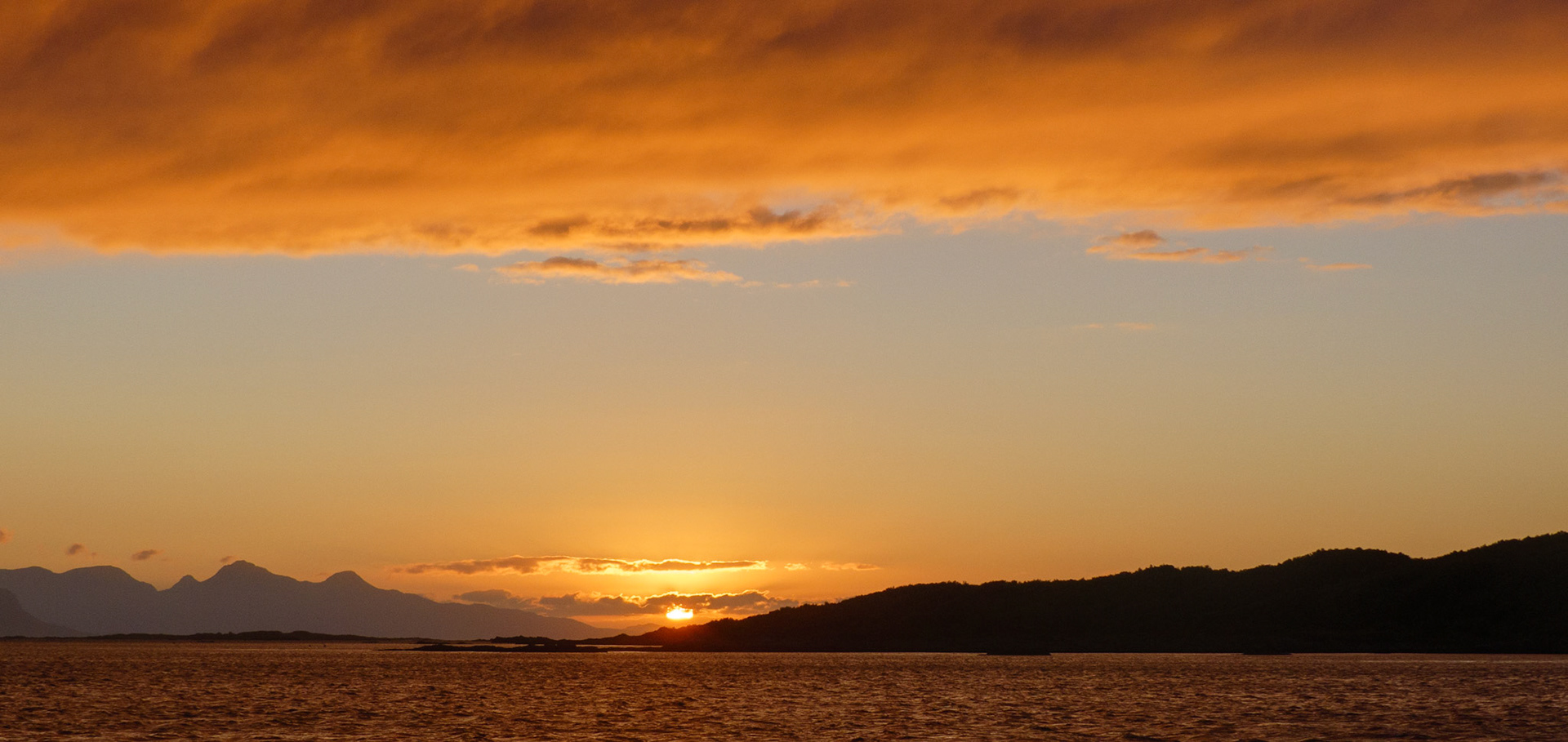
Sunset from Arisaig
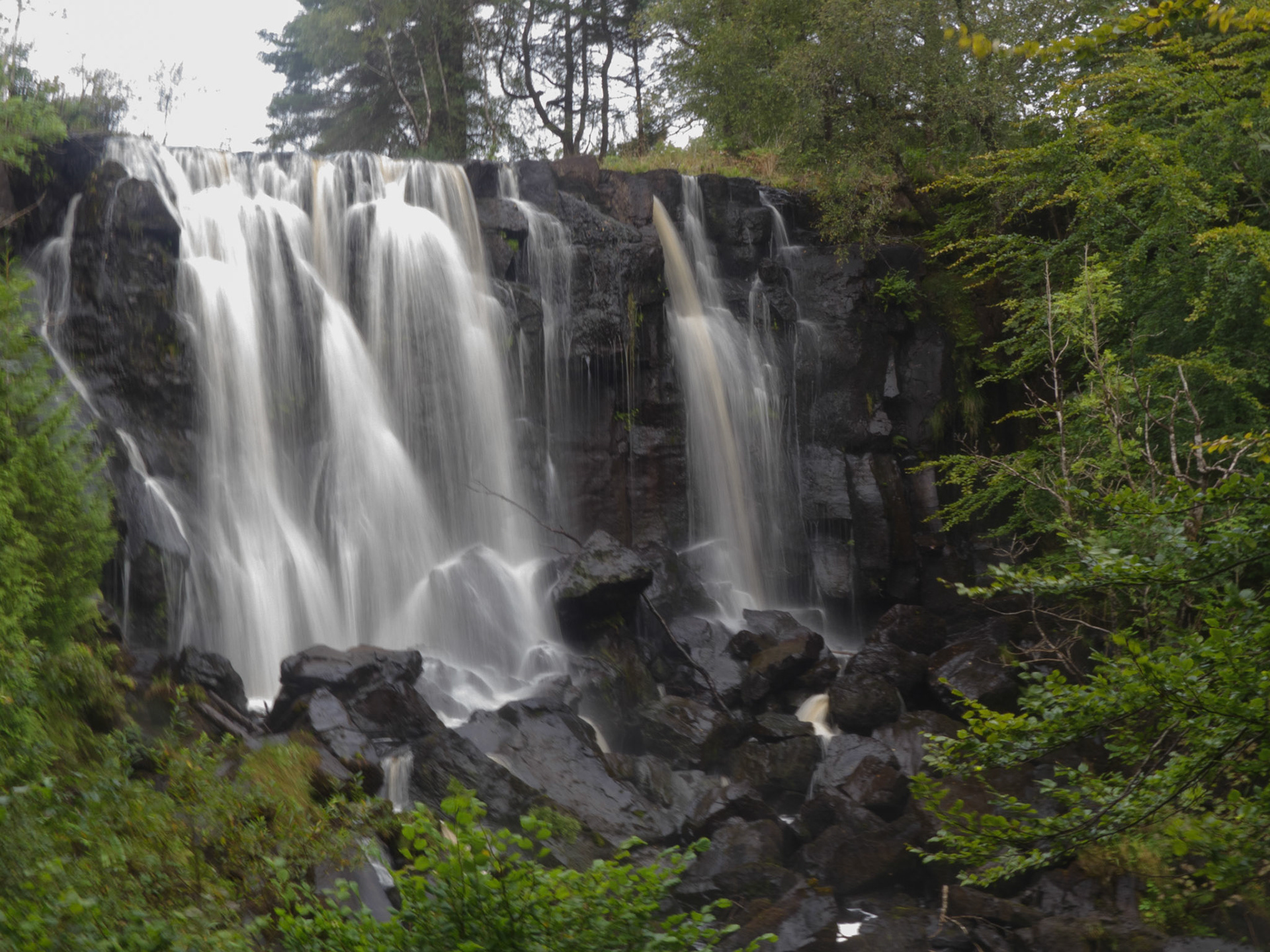
upper falls at Aros park tobermory
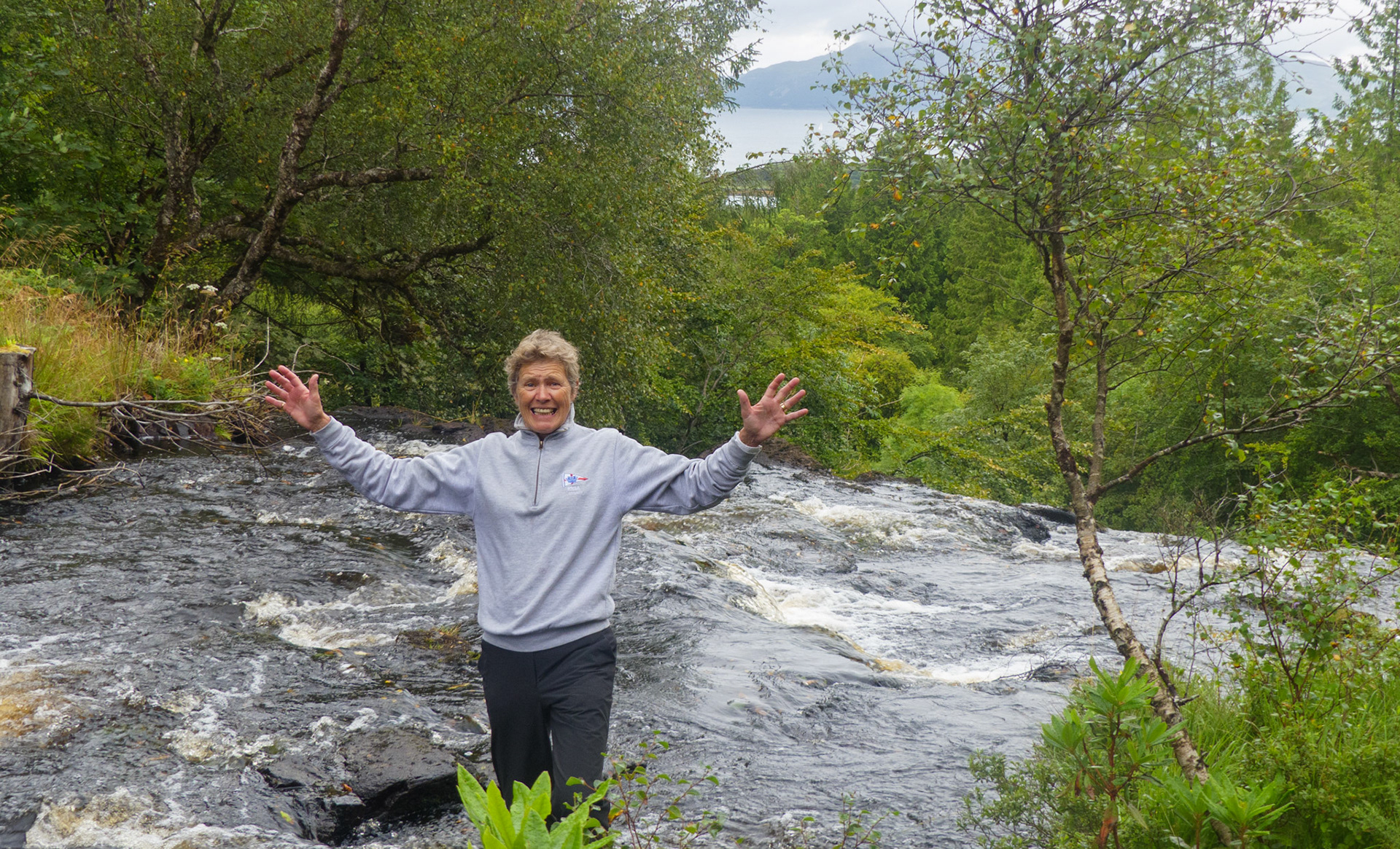
Ali at the top of aros falls
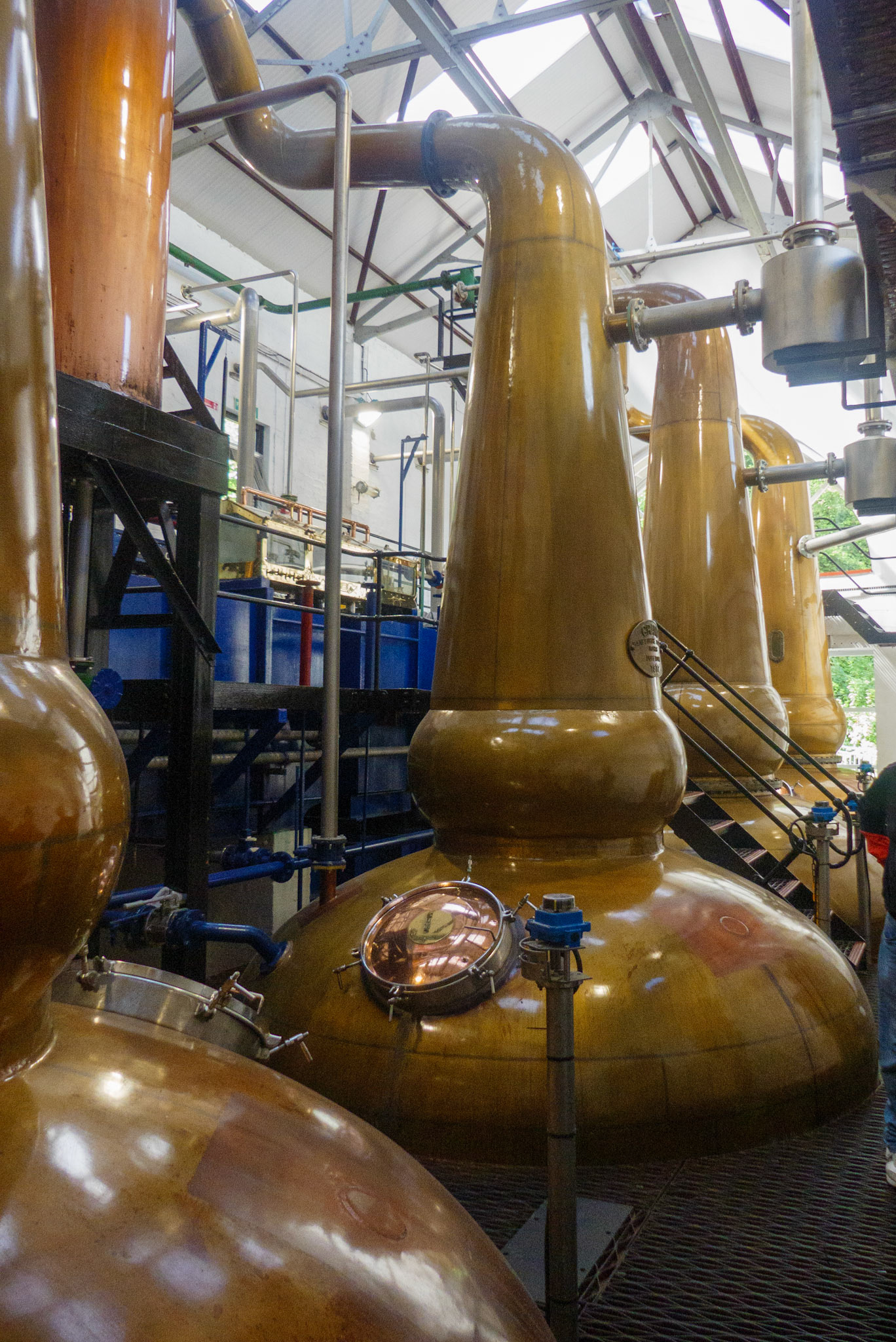
tobermory whiskey stills
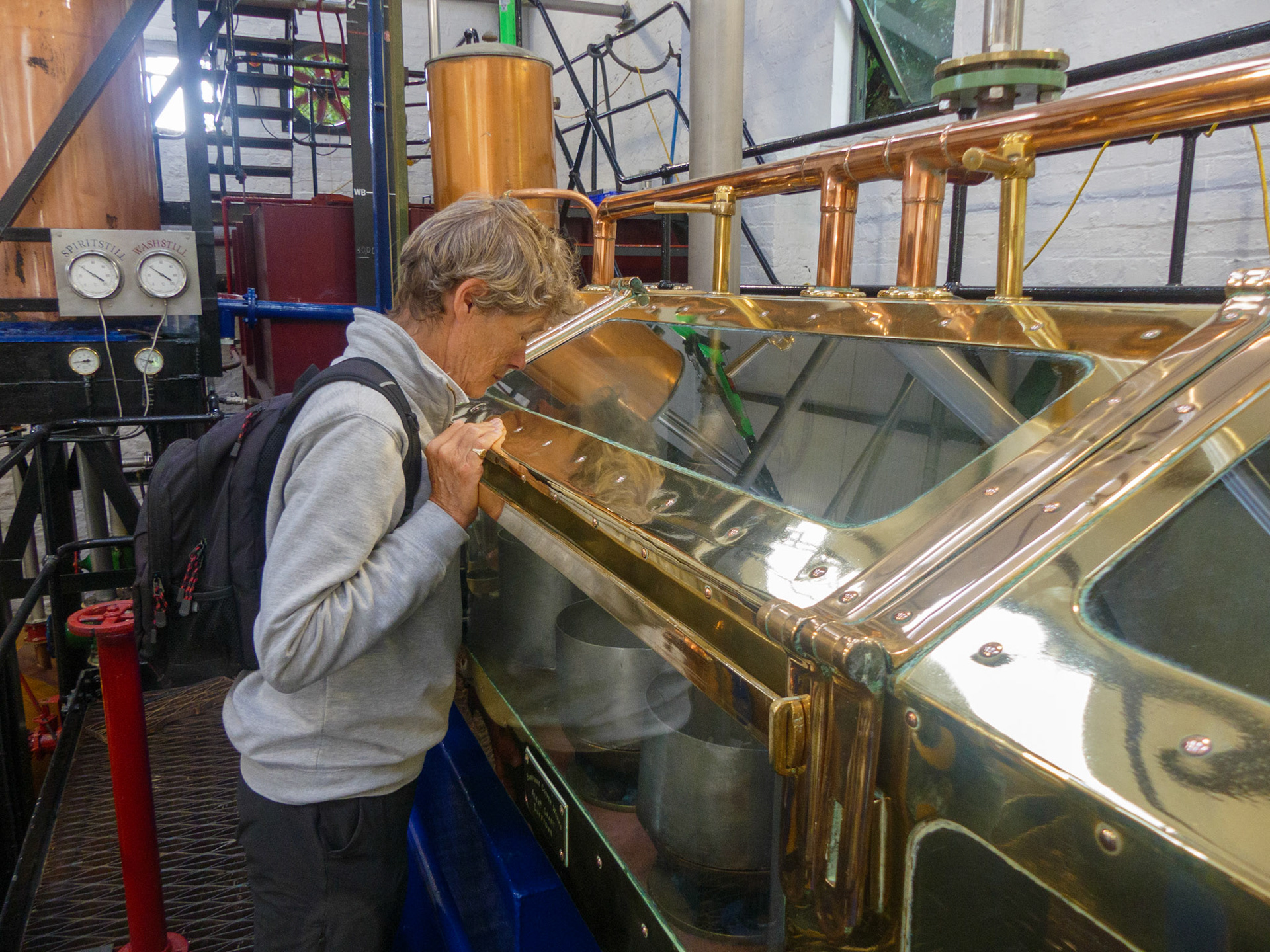
can I taste some please
Were they singing or laughing? (look at the beaks)
Leaving Tobermory in a bit of a drizzle and low cloud, we headed east into Loch Sunart and unexpectedly the clouds cleared and the sun came out and we had a delightful sail under headsail only all the way up this stunning tree-lined loch. We stayed in the friendly little marina, efficiently run and managed by Jan in Salen and used their excellent community store, fuel and gas store and facilities. A walk into the hills using Jan’s helpful OS maps gave us a good leg stretch before we set off again for Loch Aline before the weather set in from the West. Again the forecast was a little more frisky than expected but we had an excellent upwind sail all the way from Loch Drumbuie to Loch Aline in a SW Force 6. Covering 33 miles and working hard on the winches meant we slept very well that night at anchor at the head of the loch. Recovering the next day and watching the clouds scud across the sky we caught up on a few admin jobs then headed down the next day to the Marina to top up on supplies at the community store and use the laundry facilities and to dry the boat out after so many days at anchor and on mooring buoys. Fresh bed linen, a dry boat and clean clothes – there is no greater treat than that to encourage a great nights sleep.
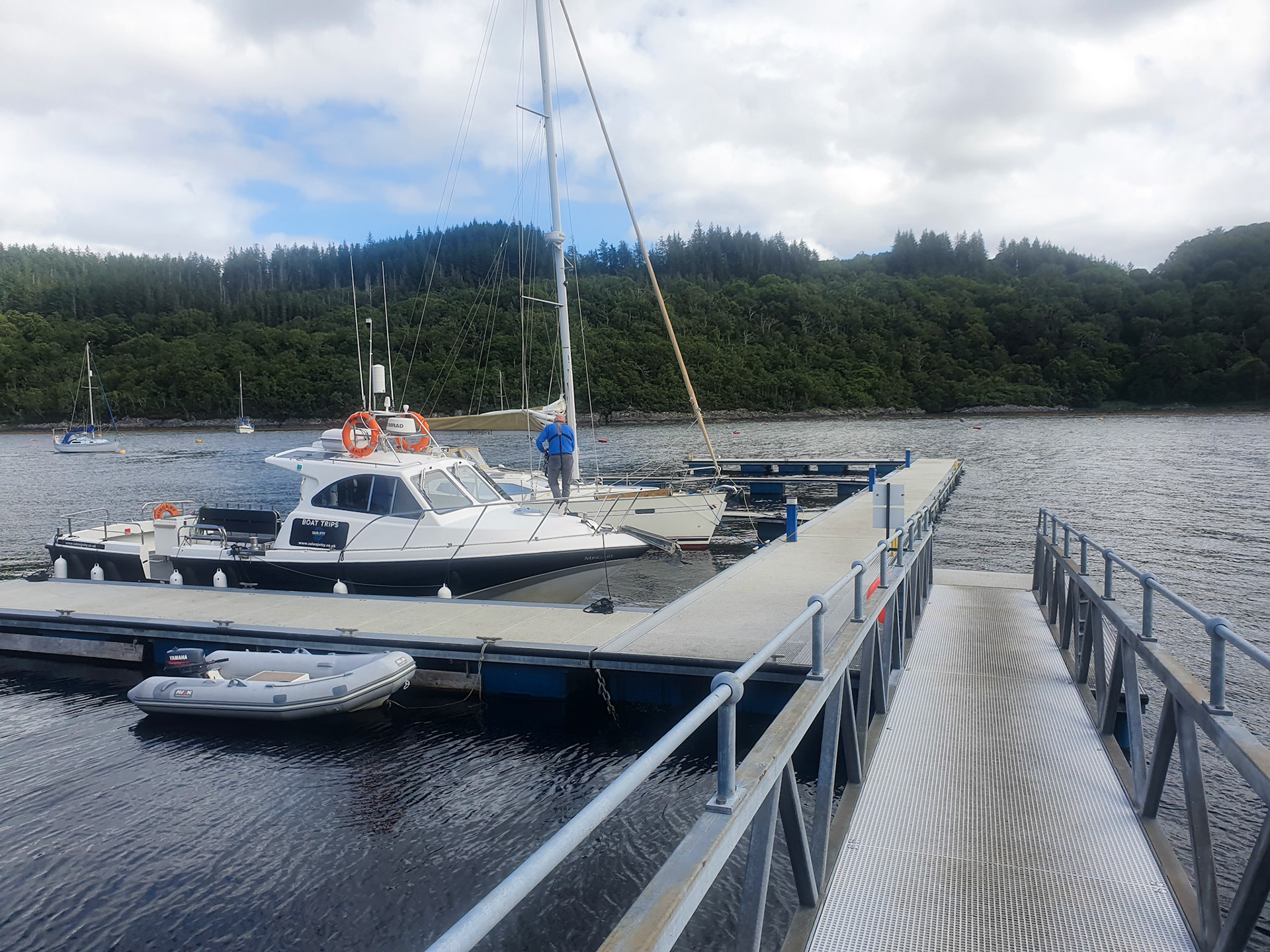
anyone else around
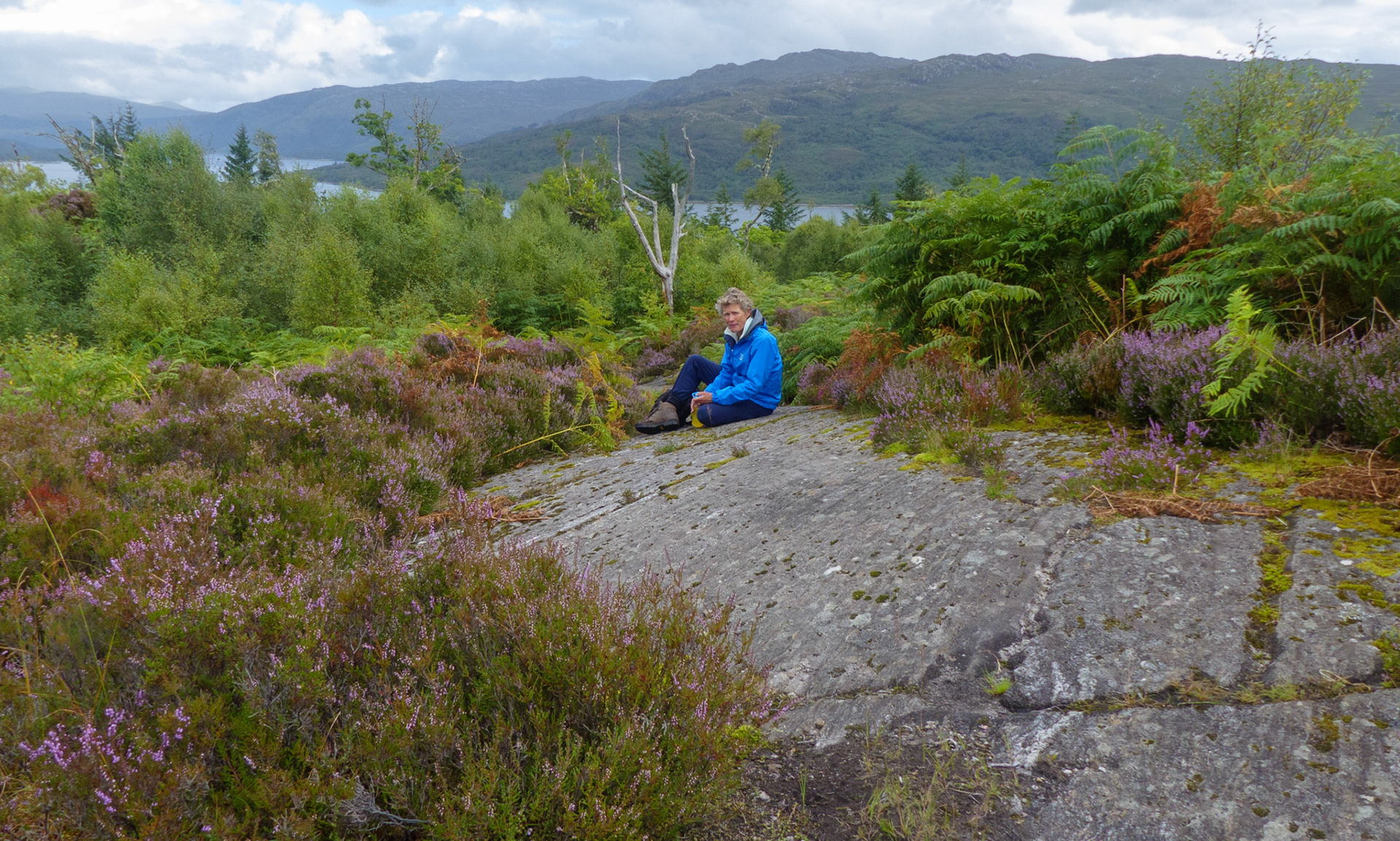
Ali on glaciated quartz rock
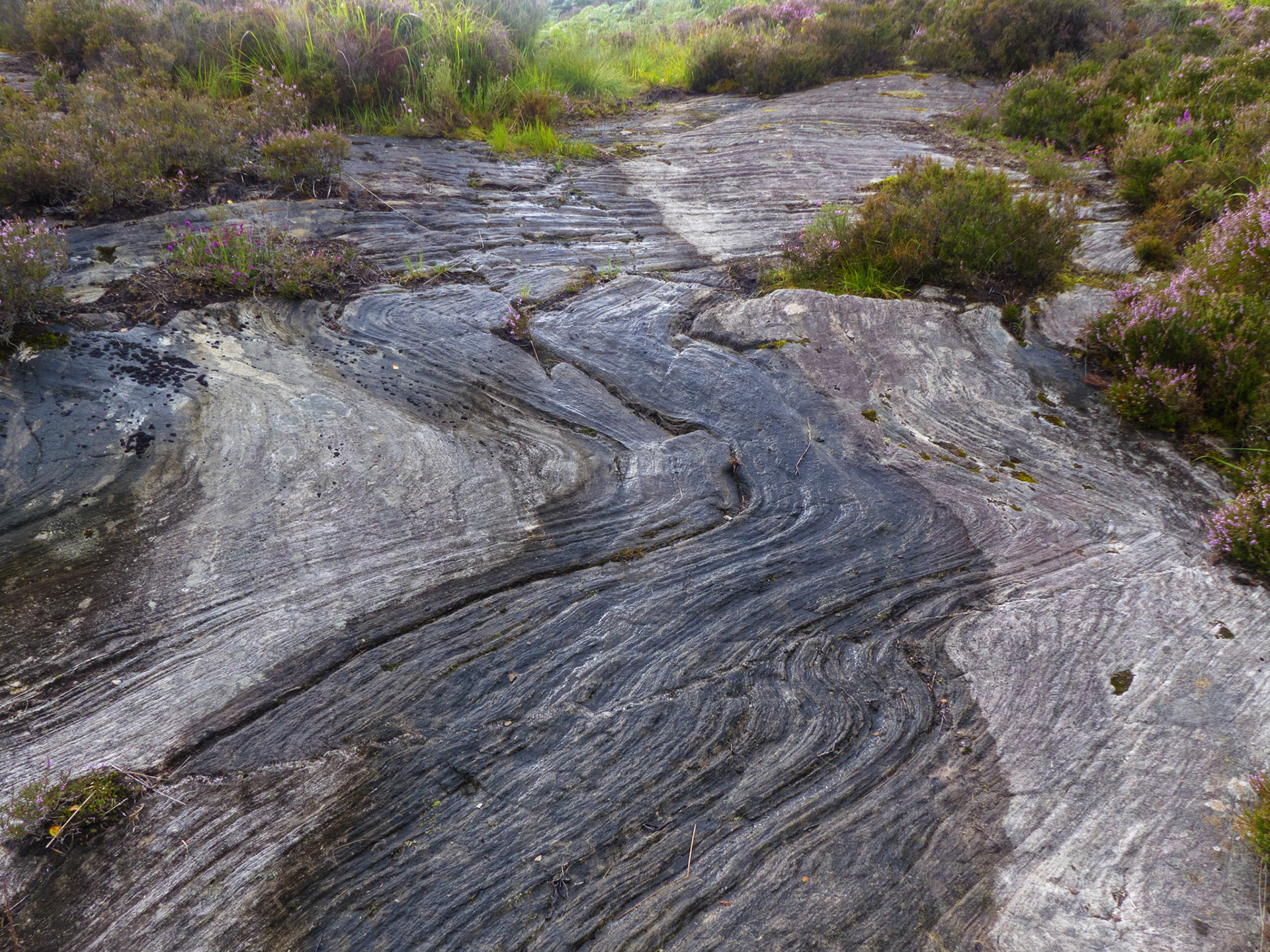
smooth glaciated rock
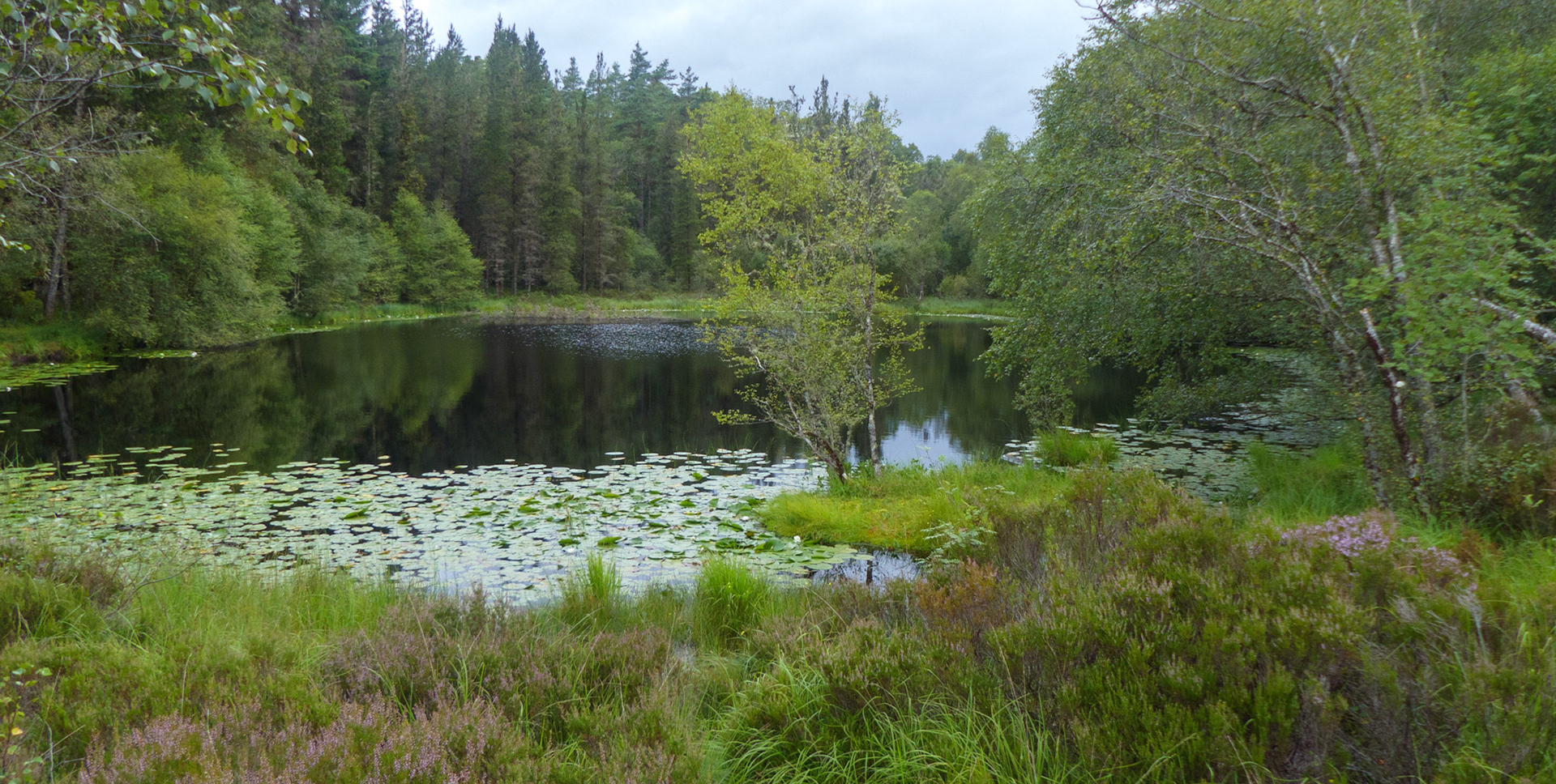
lochen near salen
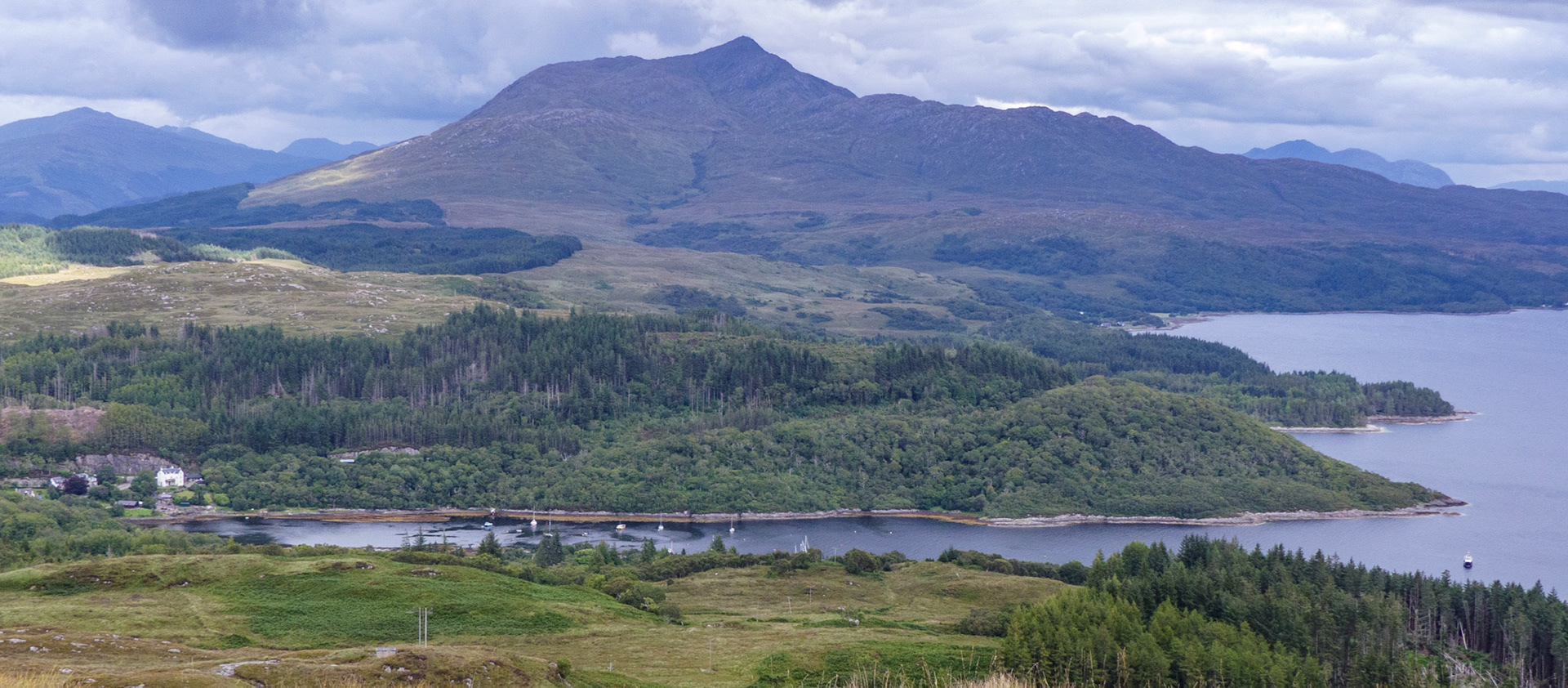
Salen from the pylon walk
Leaving Loch Aline we headed for Loch Linnhe marina as the breeze was coming in from the south west and although not strong we wanted to see a little way up past Lismore island before heading back towards Oban for family crew time. Linnhe Marina is a fairly recent (last 15 years) addition to this area. The owners are really helpful and even meet you to catch ropes and advise the best position depending on the wind direction and strength. A good leg stretch to the nearest pub – called The New Inn – reopened after 200 years! led us past Castle Stalker – well known to many who enjoyed the Monty Python Films – but also as with most Scottish castles comes with its own bloodthirsty history of Clan fighting. Recent history is more encouraging as In 1965 Lt. Col. D. R. Stewart Allward negotiated terms for the purchase of the Castle and spent the next ten years rebuilding and restoring it as it is today. It is now fully habitable. Contractors and builders in the normal sense were not employed in the restoration which was carried out by Lt. Col. Stewart Allward personally with the help of his wife, family and many friends who were willing to spend holidays and long weekends helping with the task. Although no longer alive his family still live in the castle today.
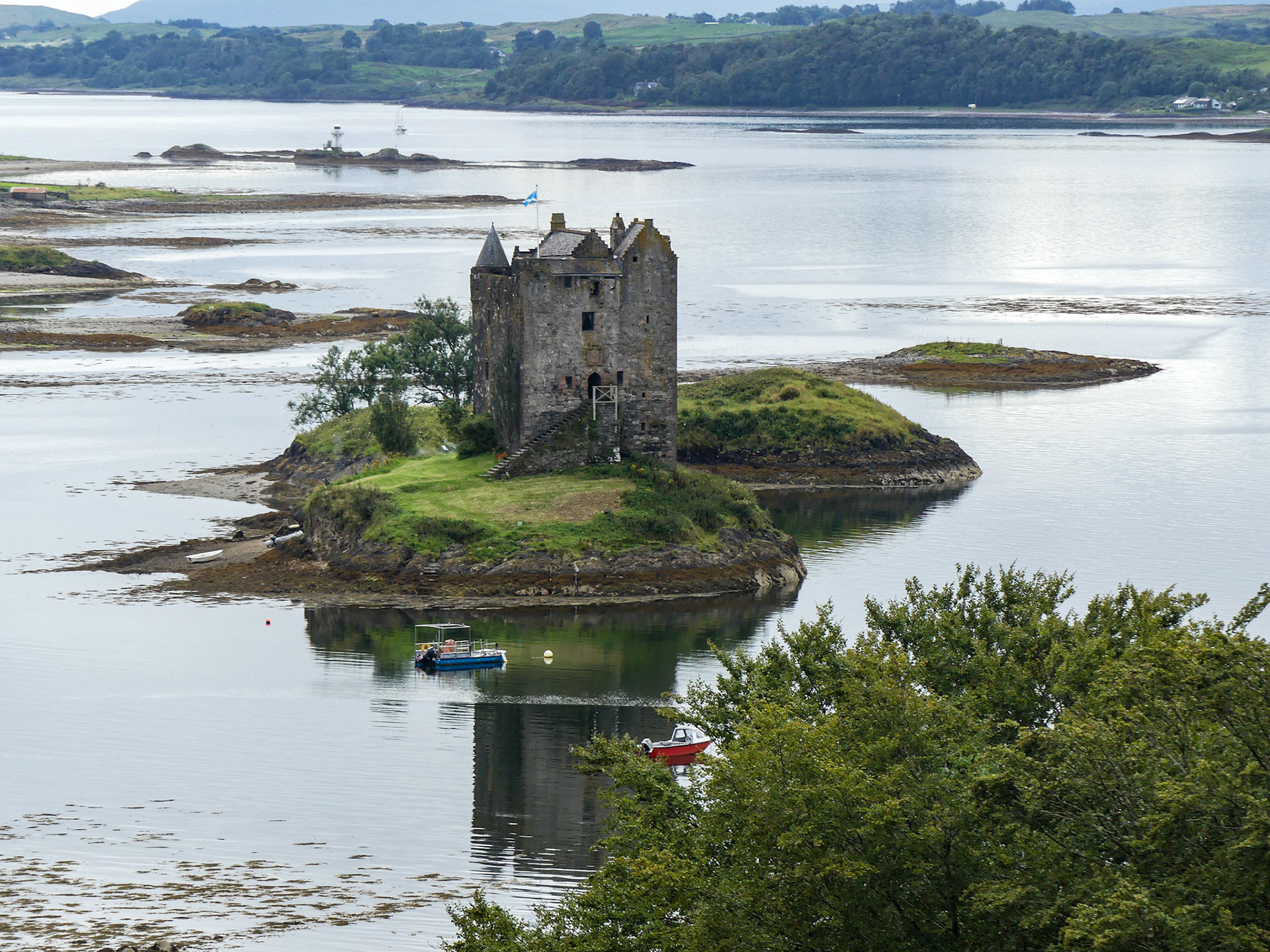
The next morning, Saturday 27 August, departing at 0730 gave us an easy motor down through the Lynn of Lorn utilising the south going ebb and we berthed in Oban to stock up and catch up with friends from Calva. All topped up with water and food and both of us with a haircut! We felt ready to take on the world. So we decided to have some navigation fun. We left Oban heading South with Kerrera to starboard and the mainland to port and headed towards Easdale island lying off the west coast of Seil Island. This 20m wide passage gave us a fun trip past the flooded slate mine we had visited by land a couple of months ago. Then we headed towards Cuan Sound, a narrow and tortuous v shaped channel 1 mile long and ¾ cable wide at its narrowest point. Connecting the Firth of Lorn with Seil Sound and Loch Melfort, it separates Torsa island from the islands of Seil to the north and Luing to the South. It was a fast passage through fast running water and weirdy currents moving the boat in mysterious ways and lasted about 30 minutes. Then we were in the tranquil waters of Loch Shuna and, not able to get into our first choice of anchorage in Adinamir, we headed to the north bay on Shuna. This delightful anchorage was empty and as the day progressed the light winds dropped to nothing and we spent a lovely evening at anchor catching sight of the island wildlife at sundown and sleeping peacefully until 0700. We left at 0900 and motored in a flat calm through the sound of Shuna to ensure we passed through the Dorus Mor at mid tide to enable us to motor up to Ardfern marina. So we are here for a couple of days before we meet up with Dominique and Al who will help us get through the Crinan Canal and into the Clyde for our last month of cruising for this year.

looking up loch Linnhe towards ben Nevis
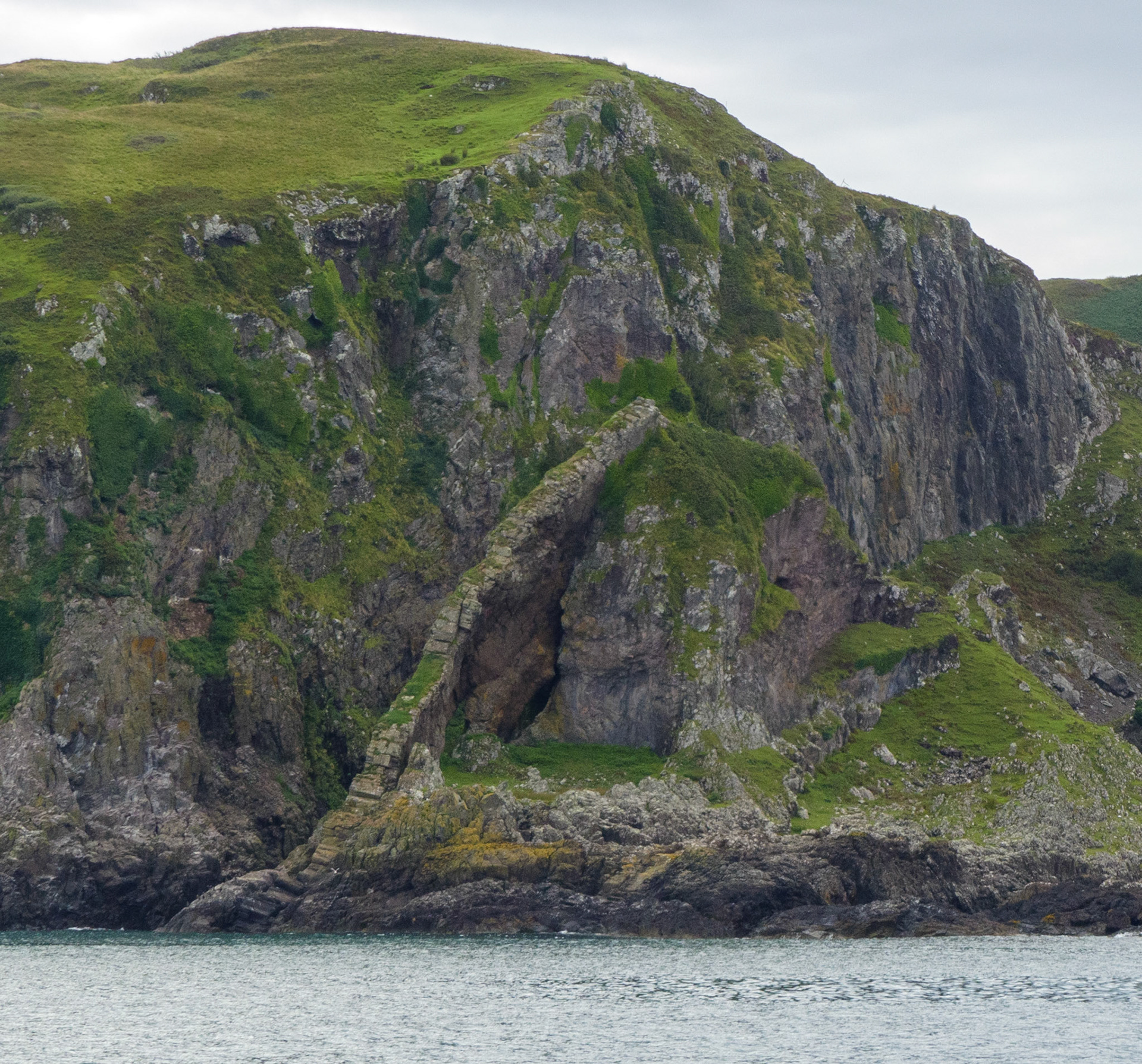
an unusual rock formation
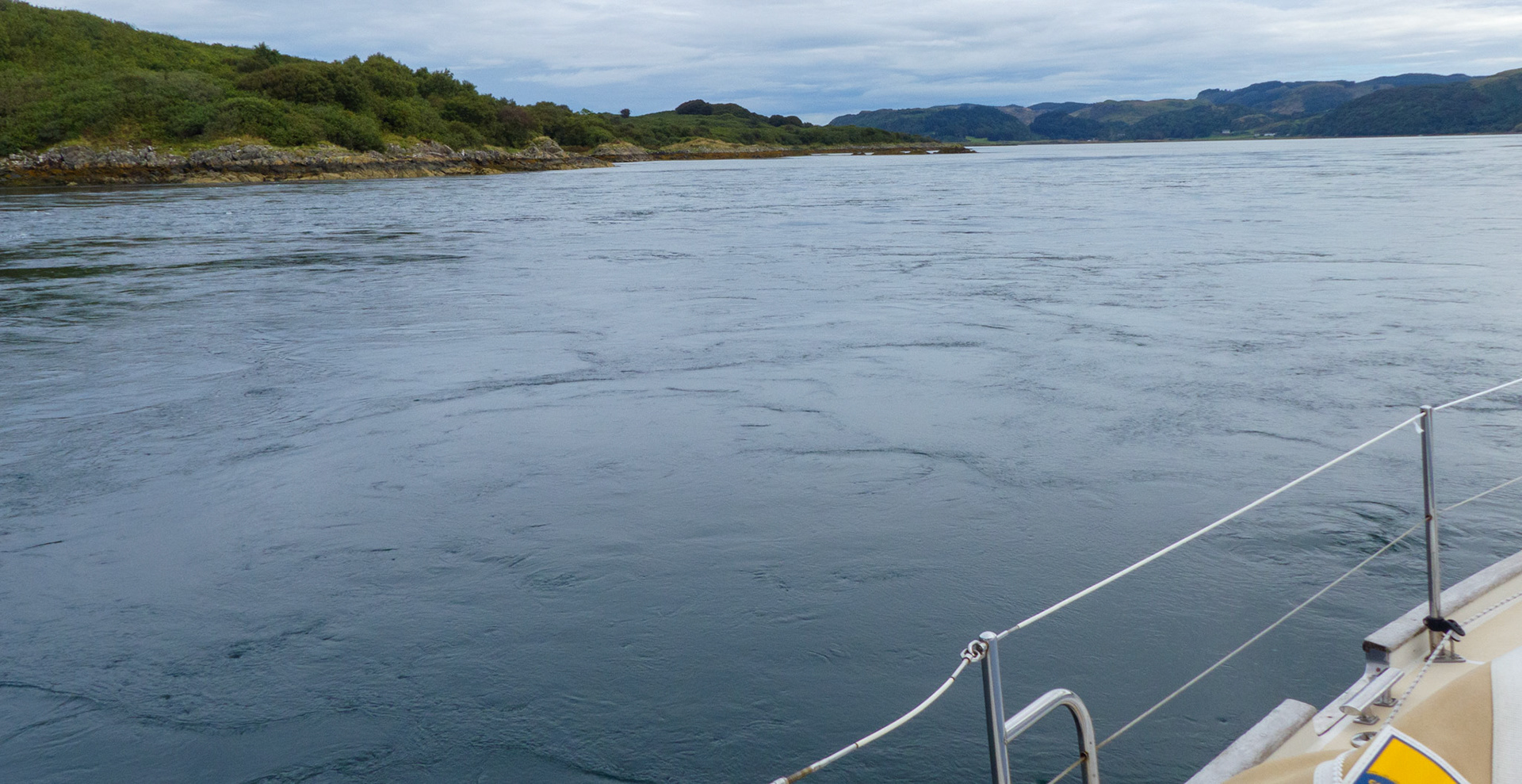
Cuan Sound
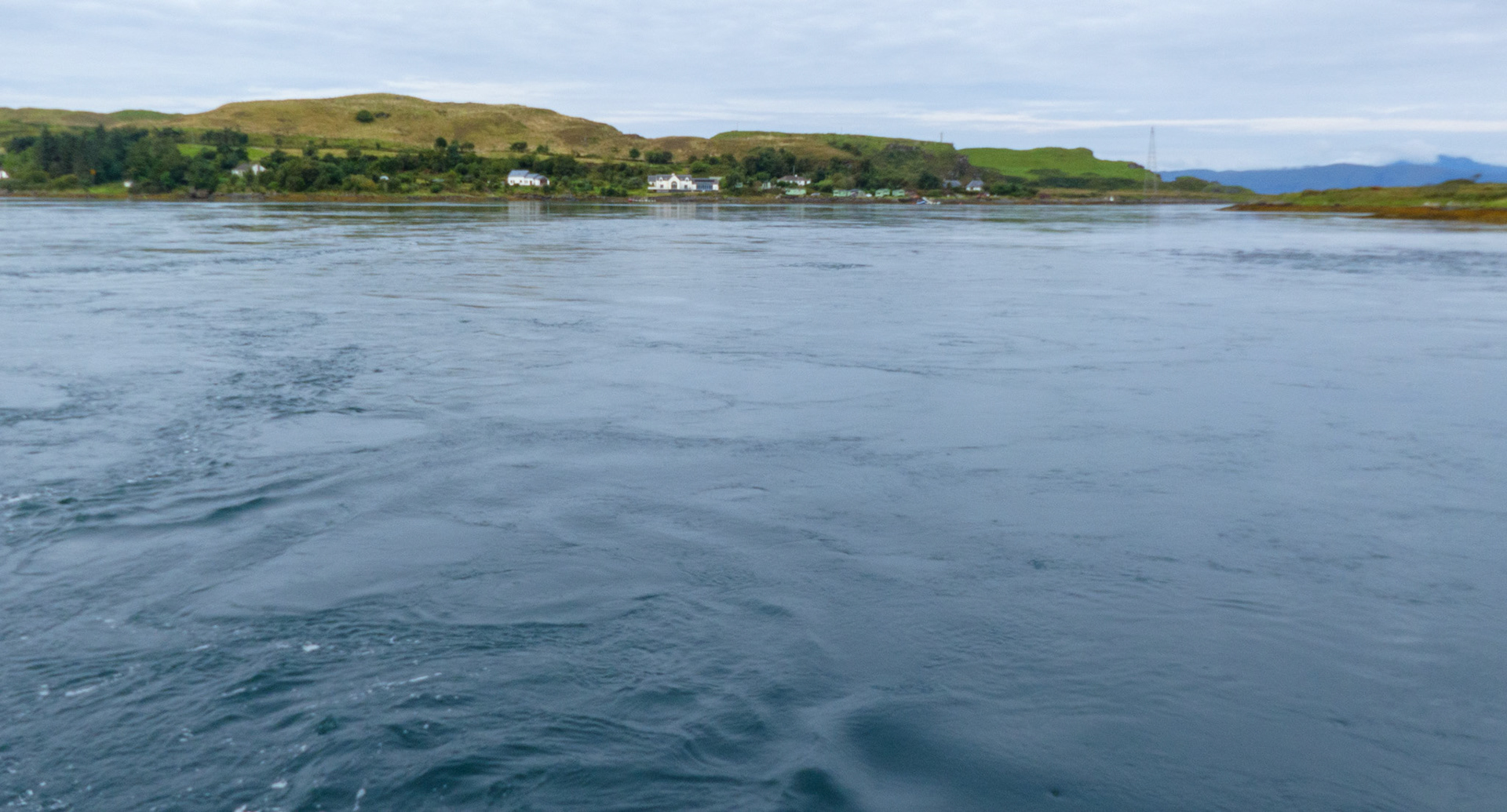
Cuan Sound
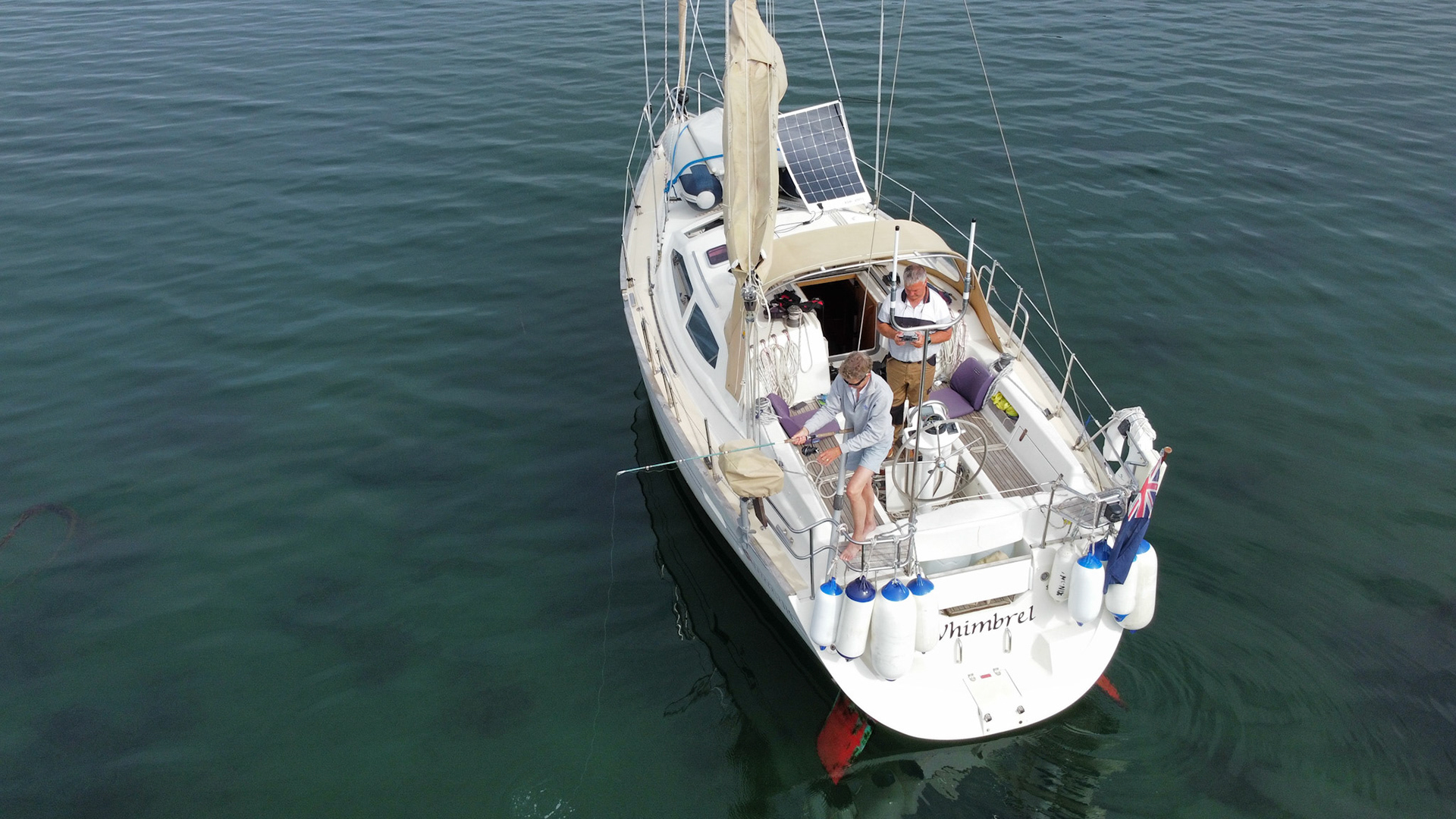
no lunch yet.....
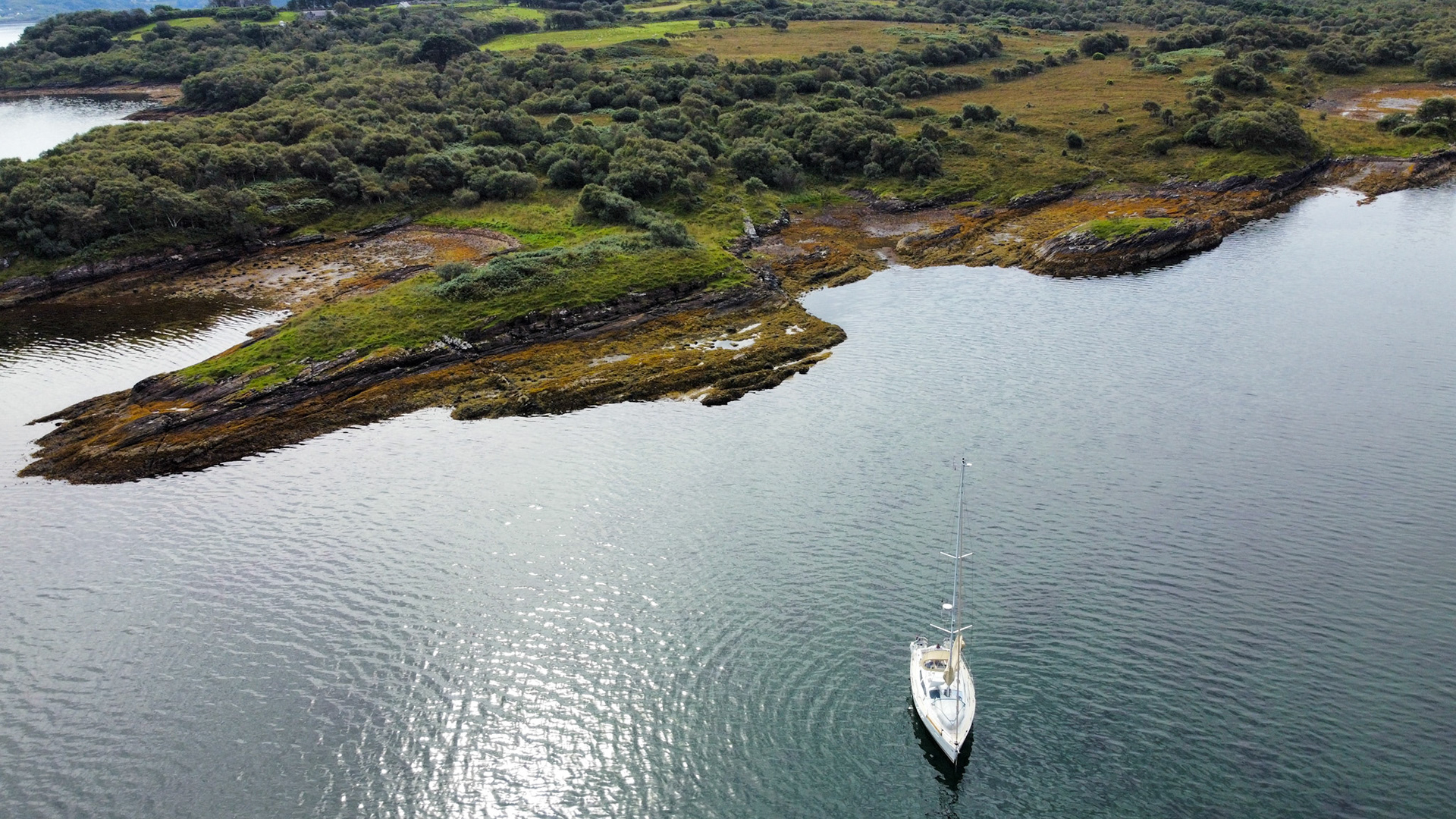
Shuna north bay
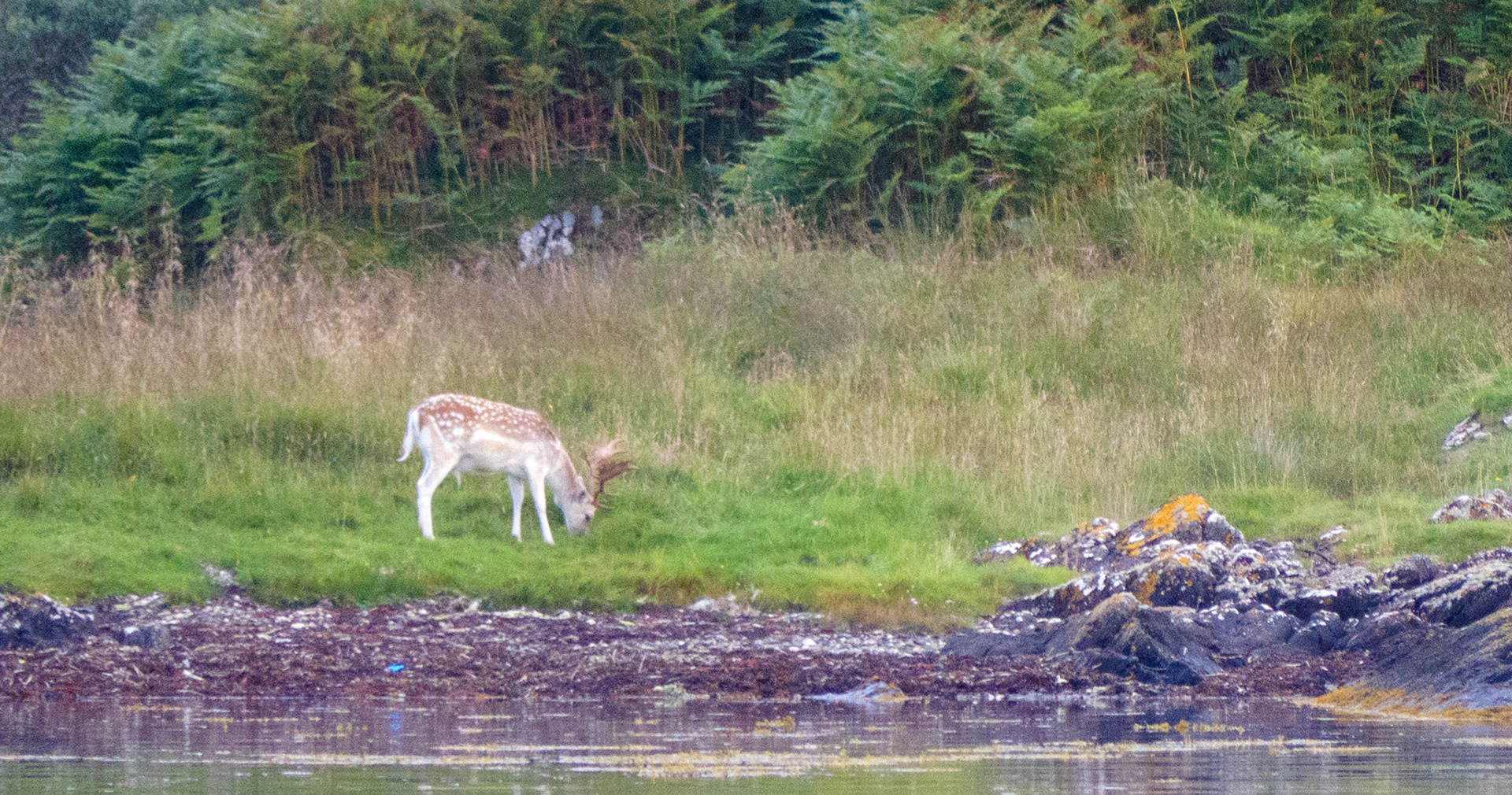
wildlife at sundown
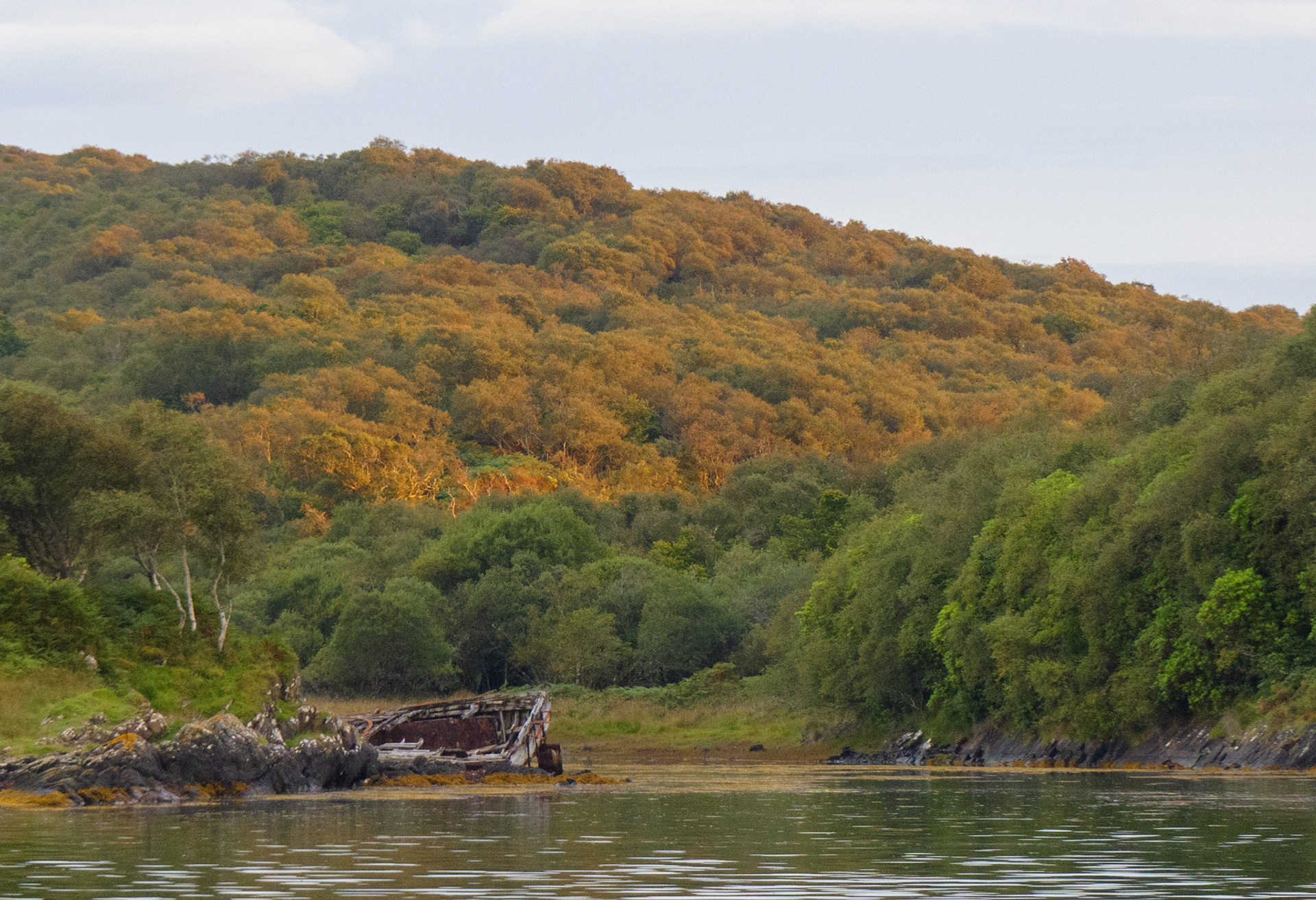
Sundown Shuna
